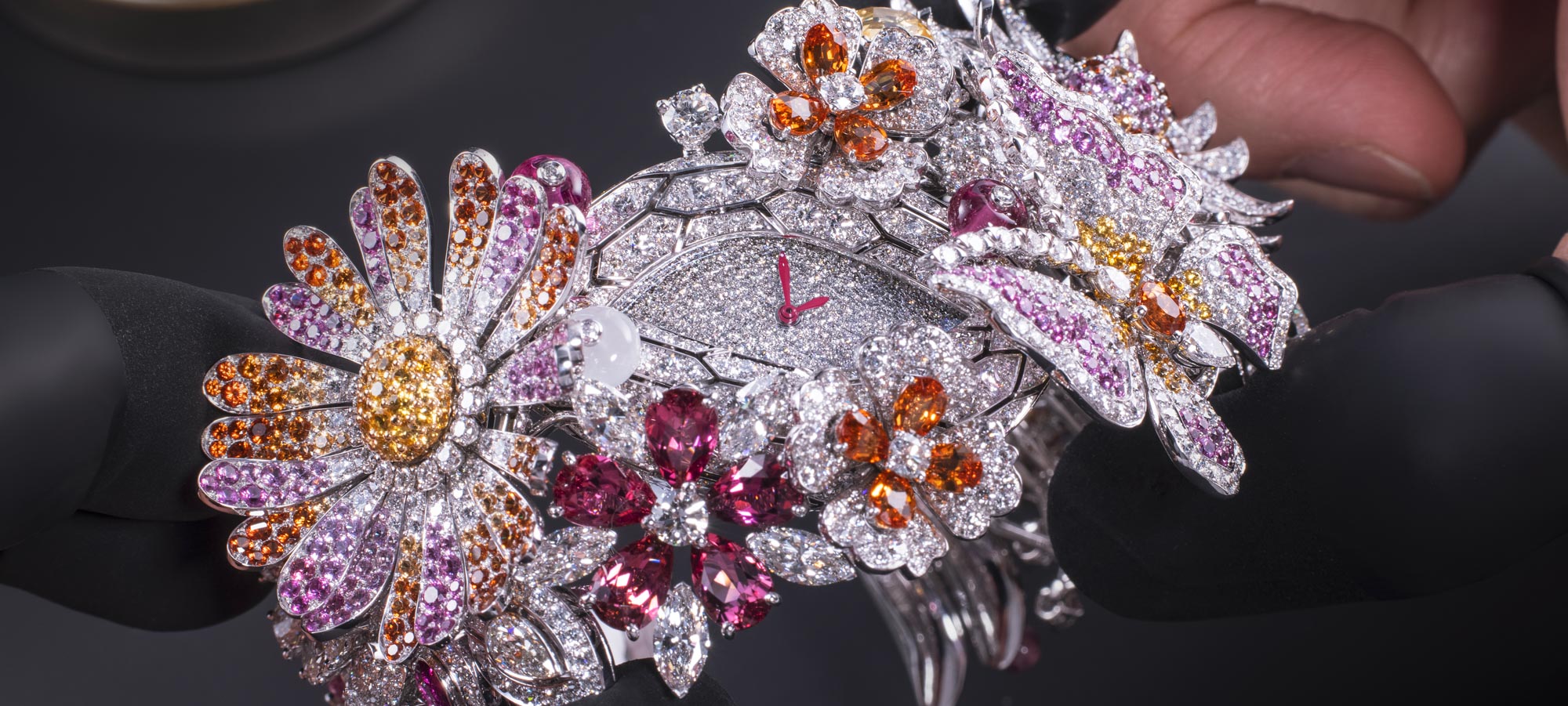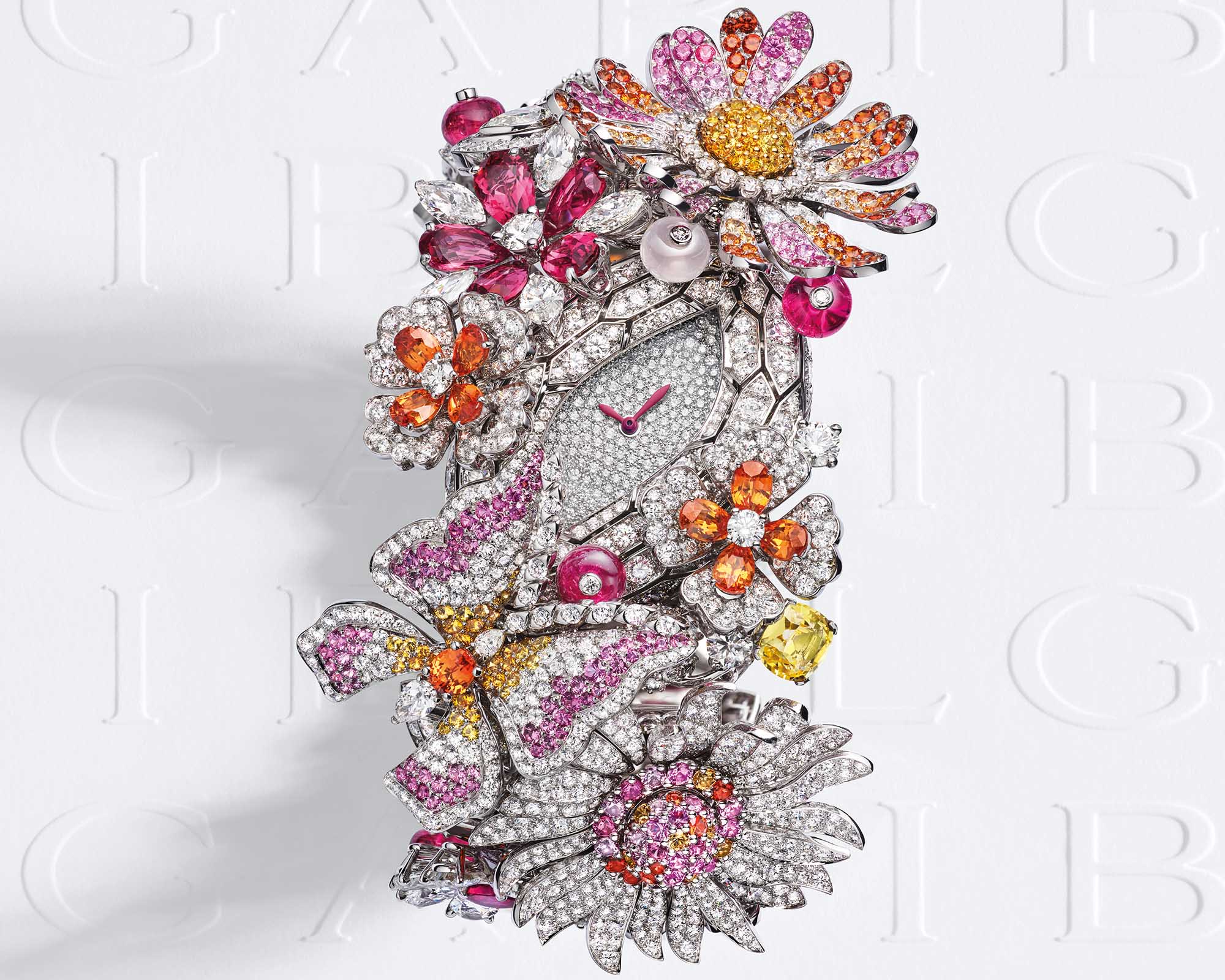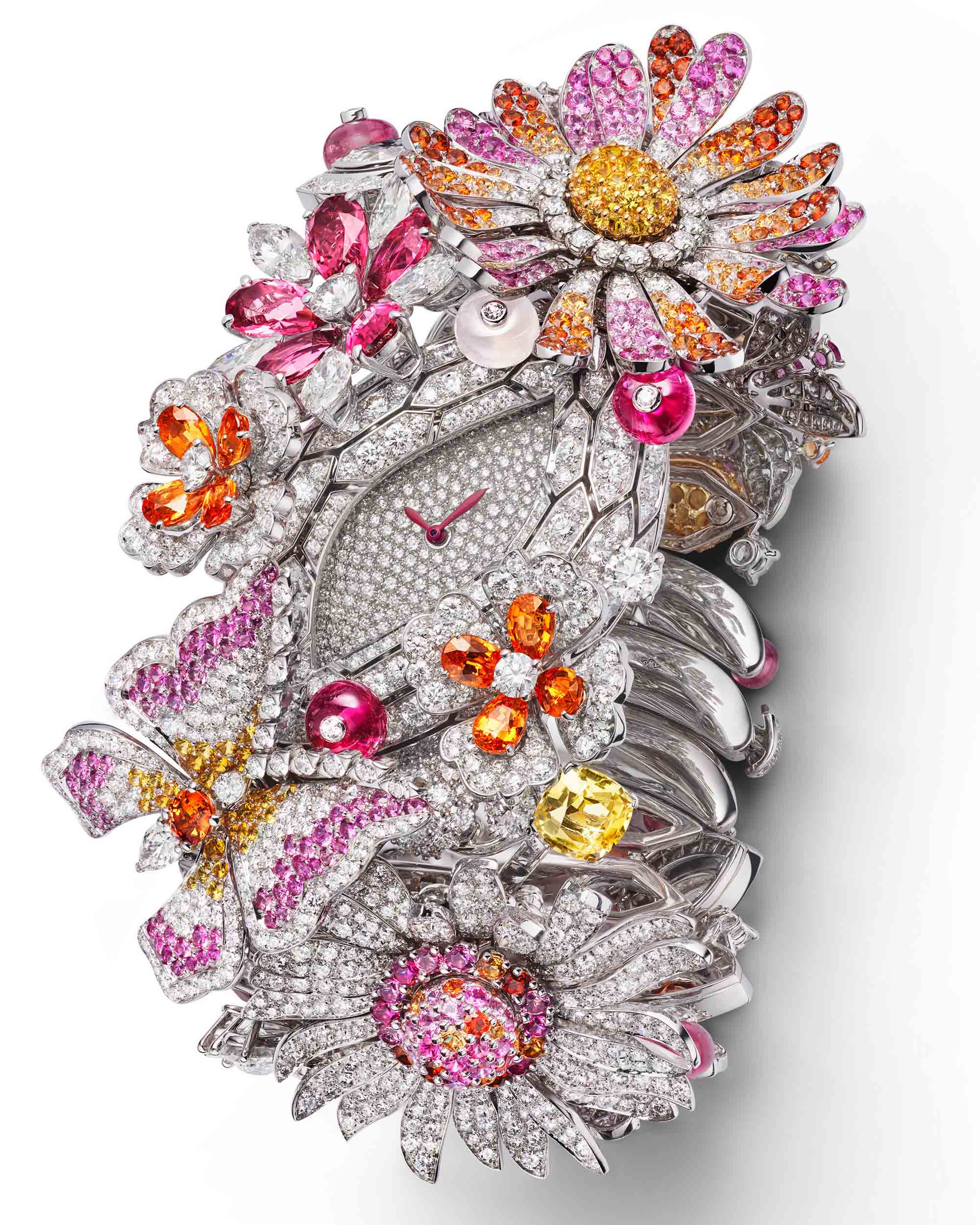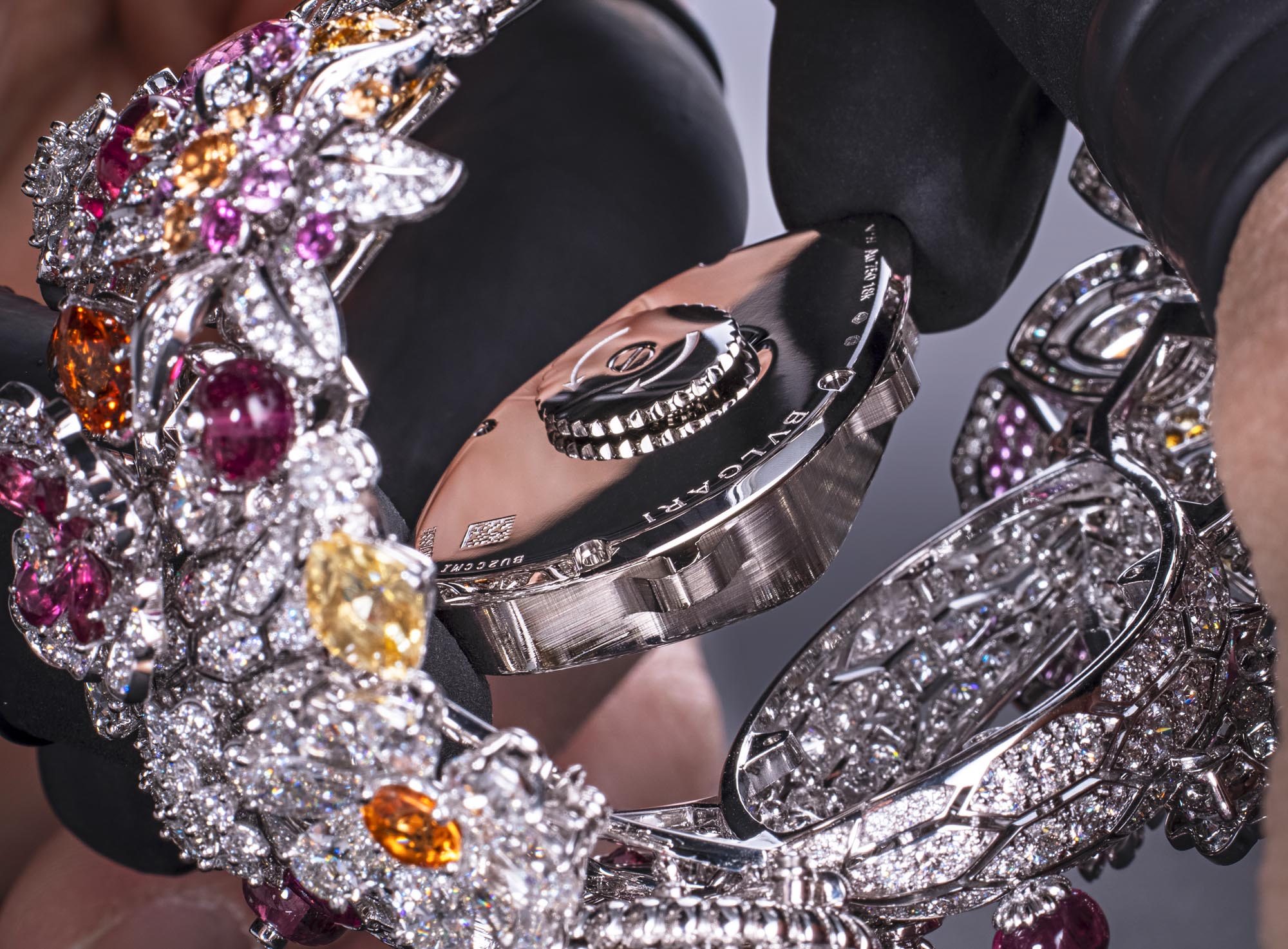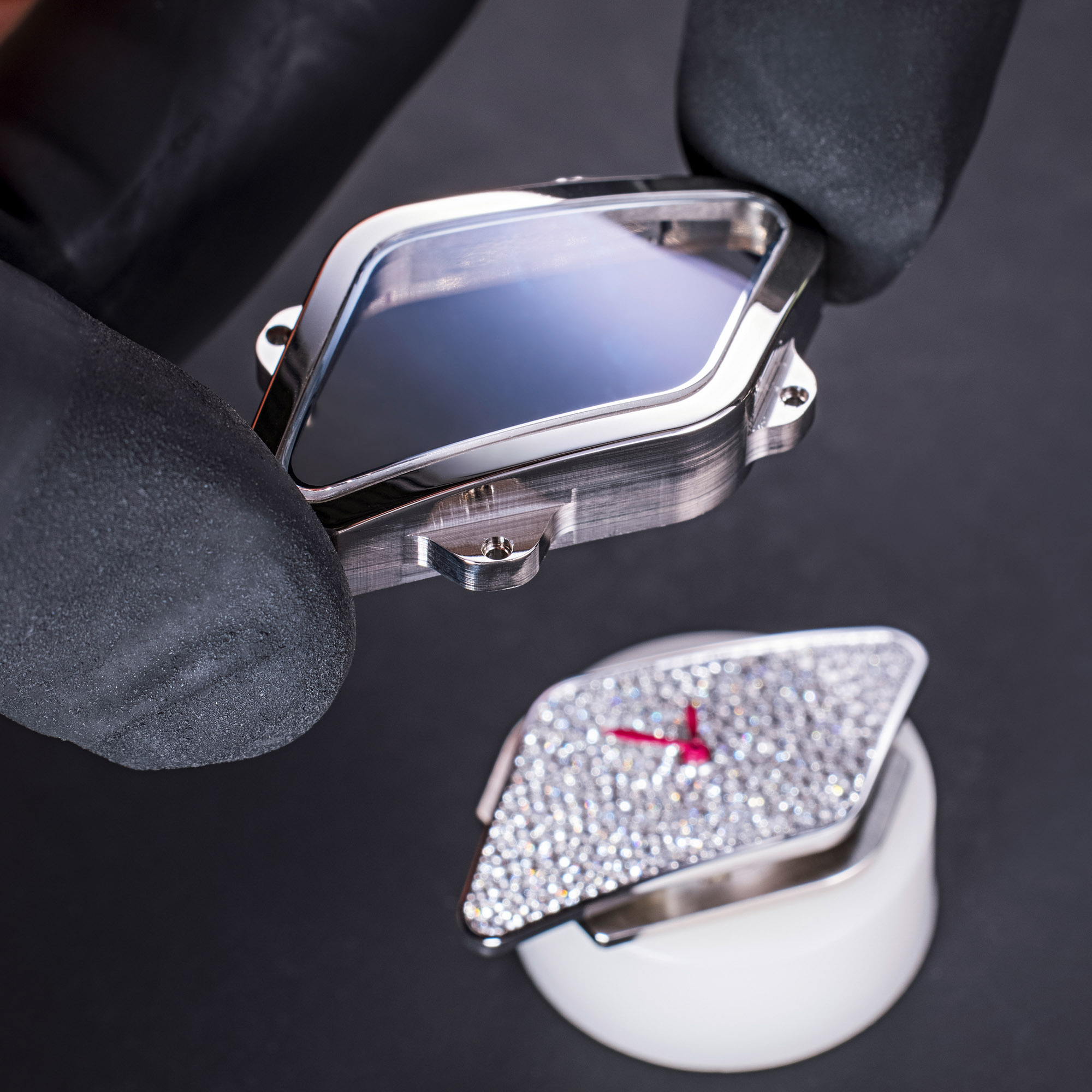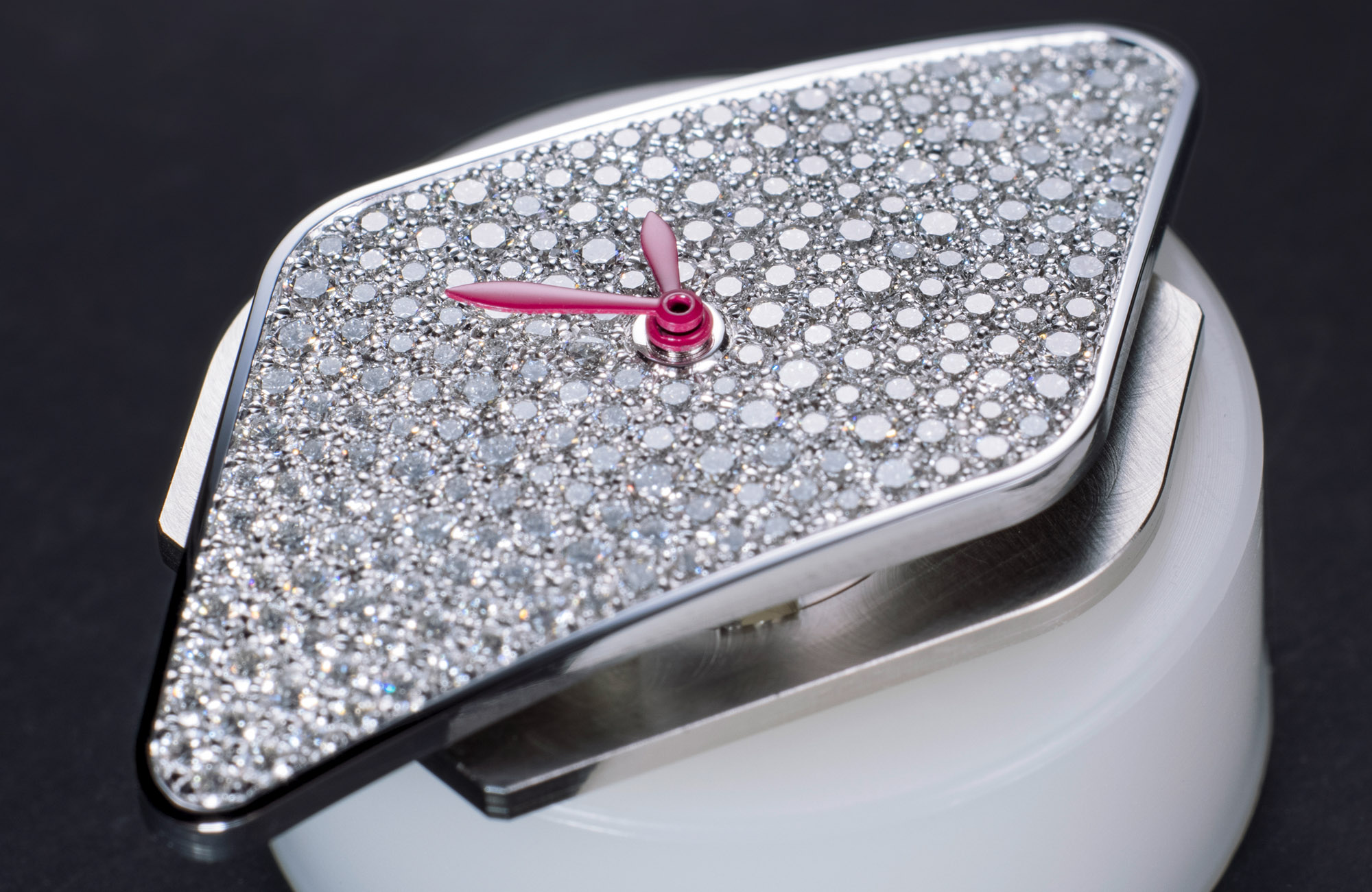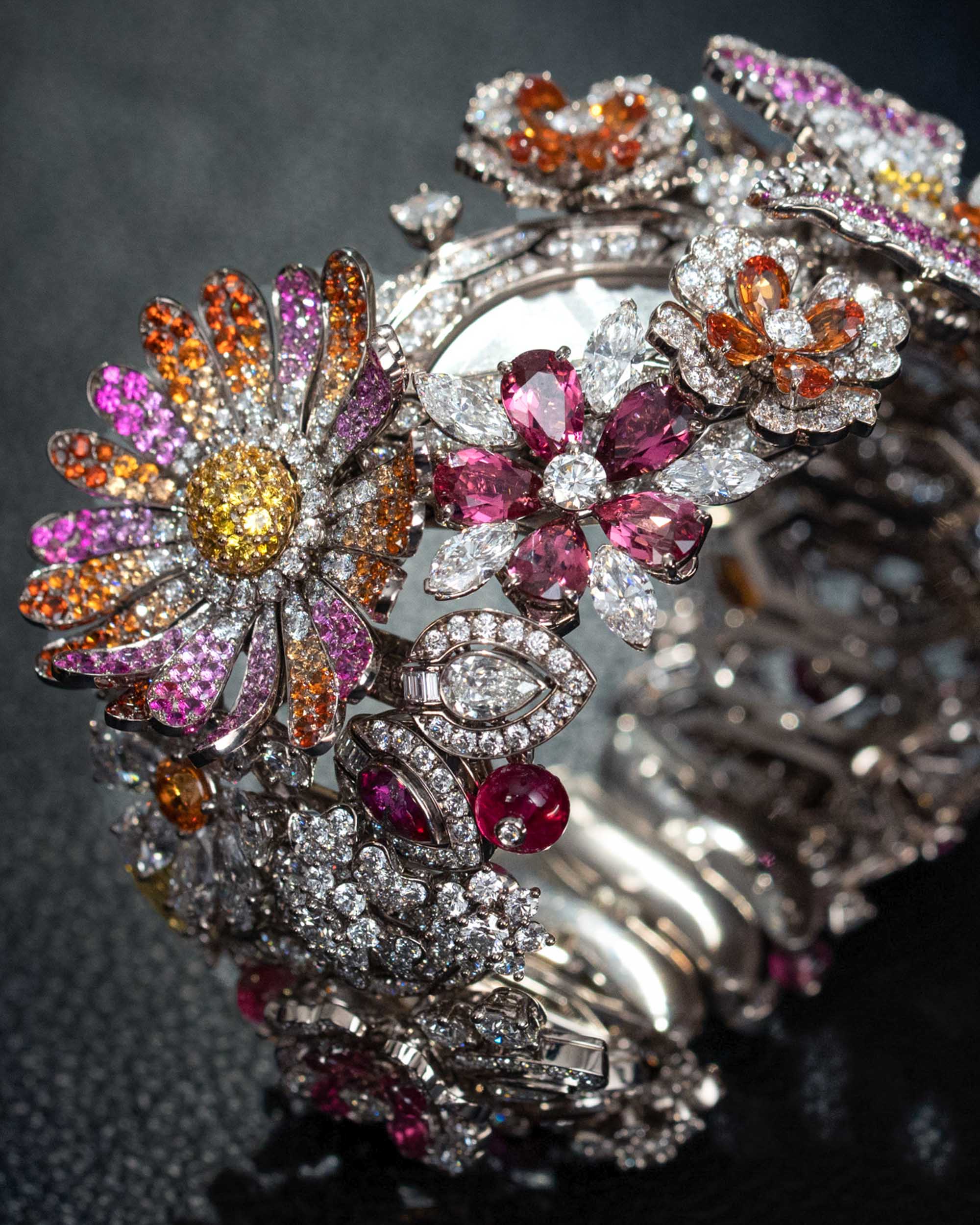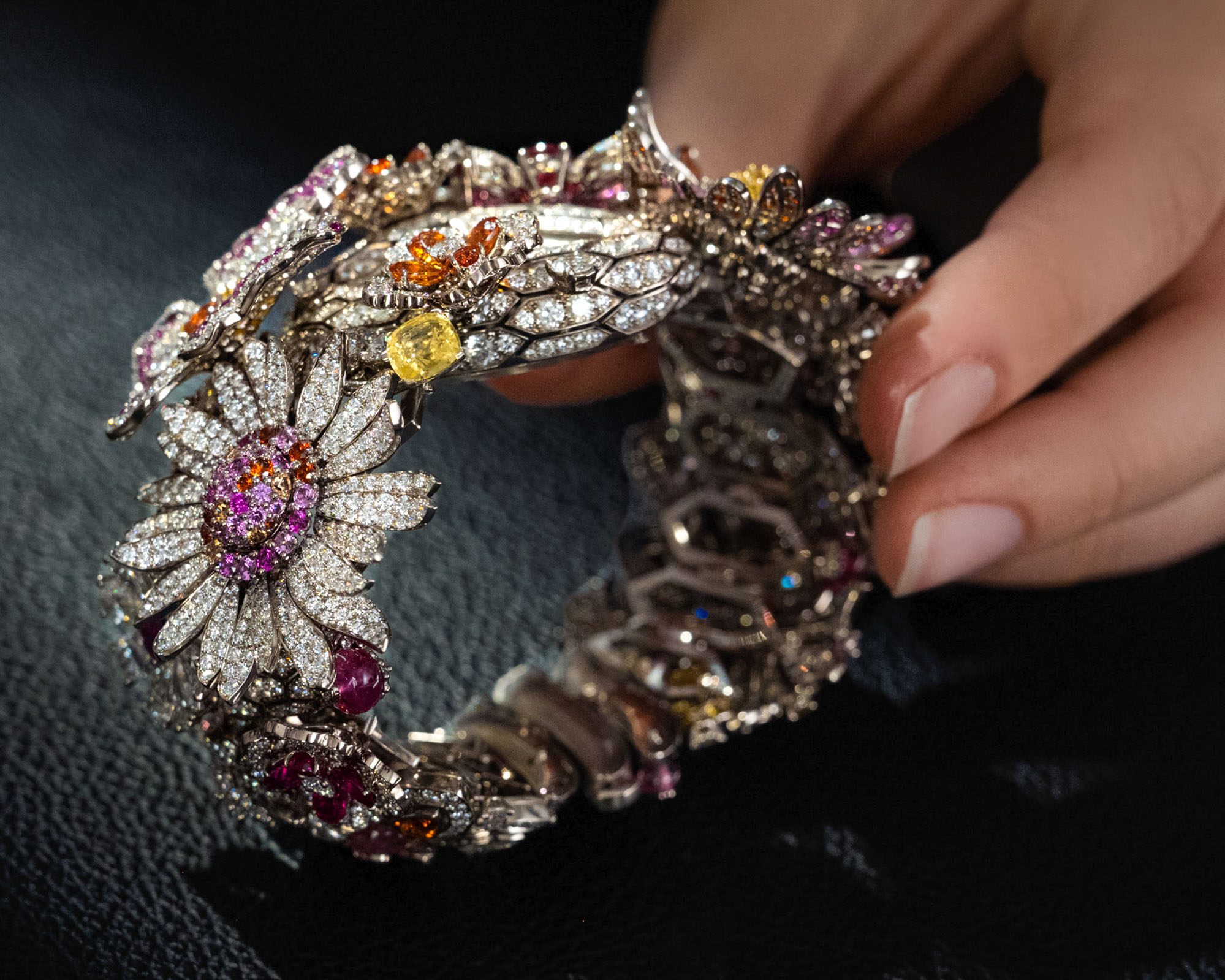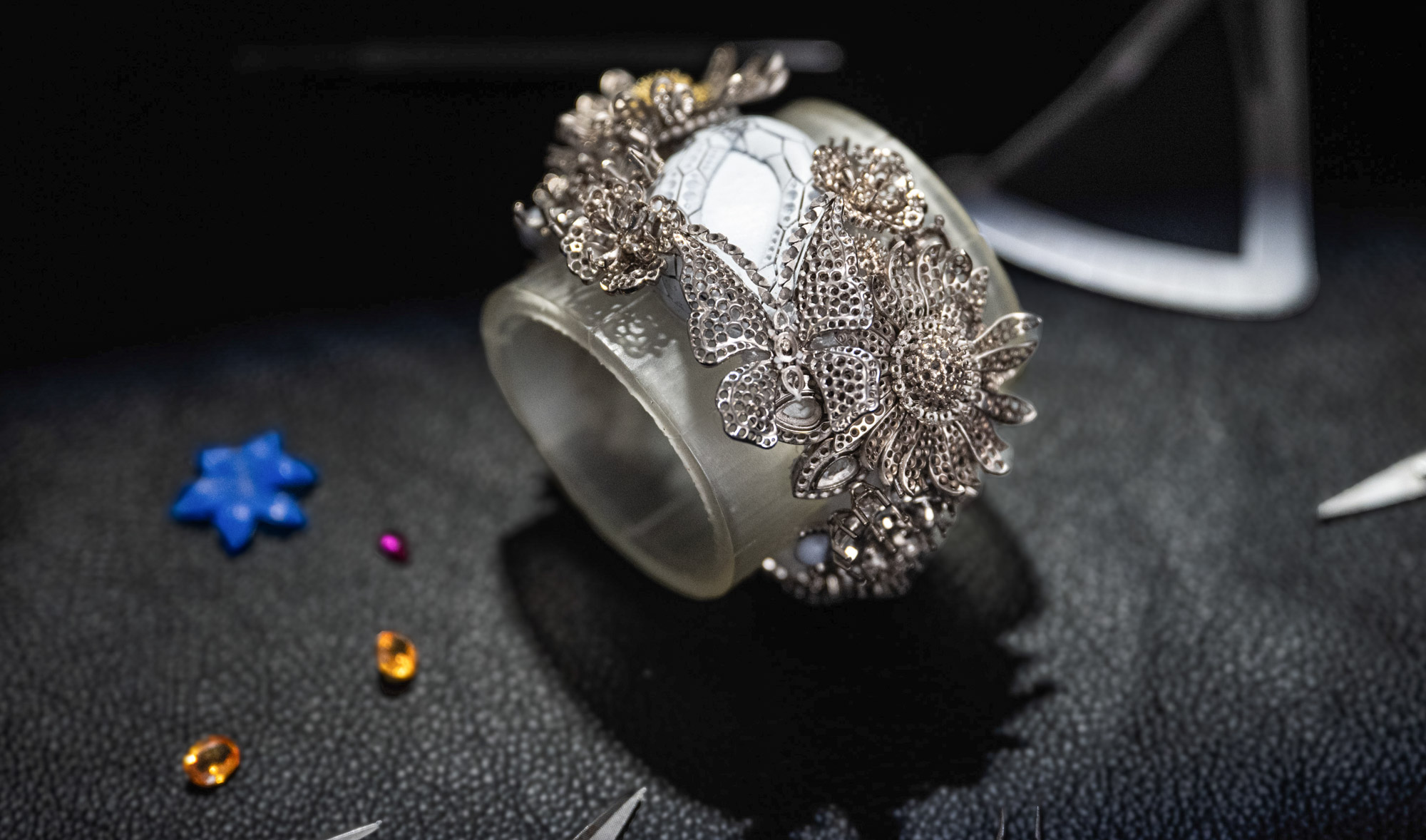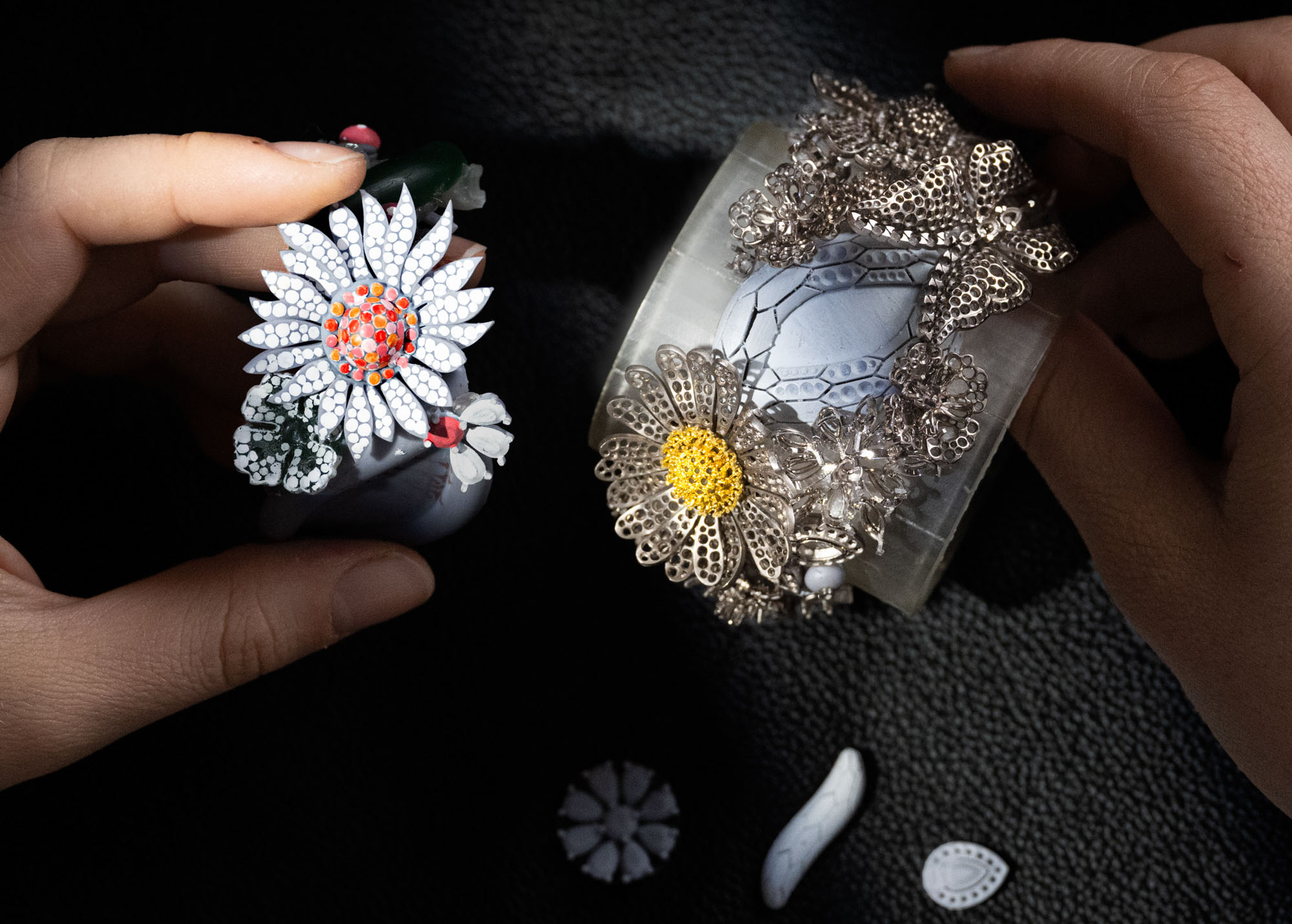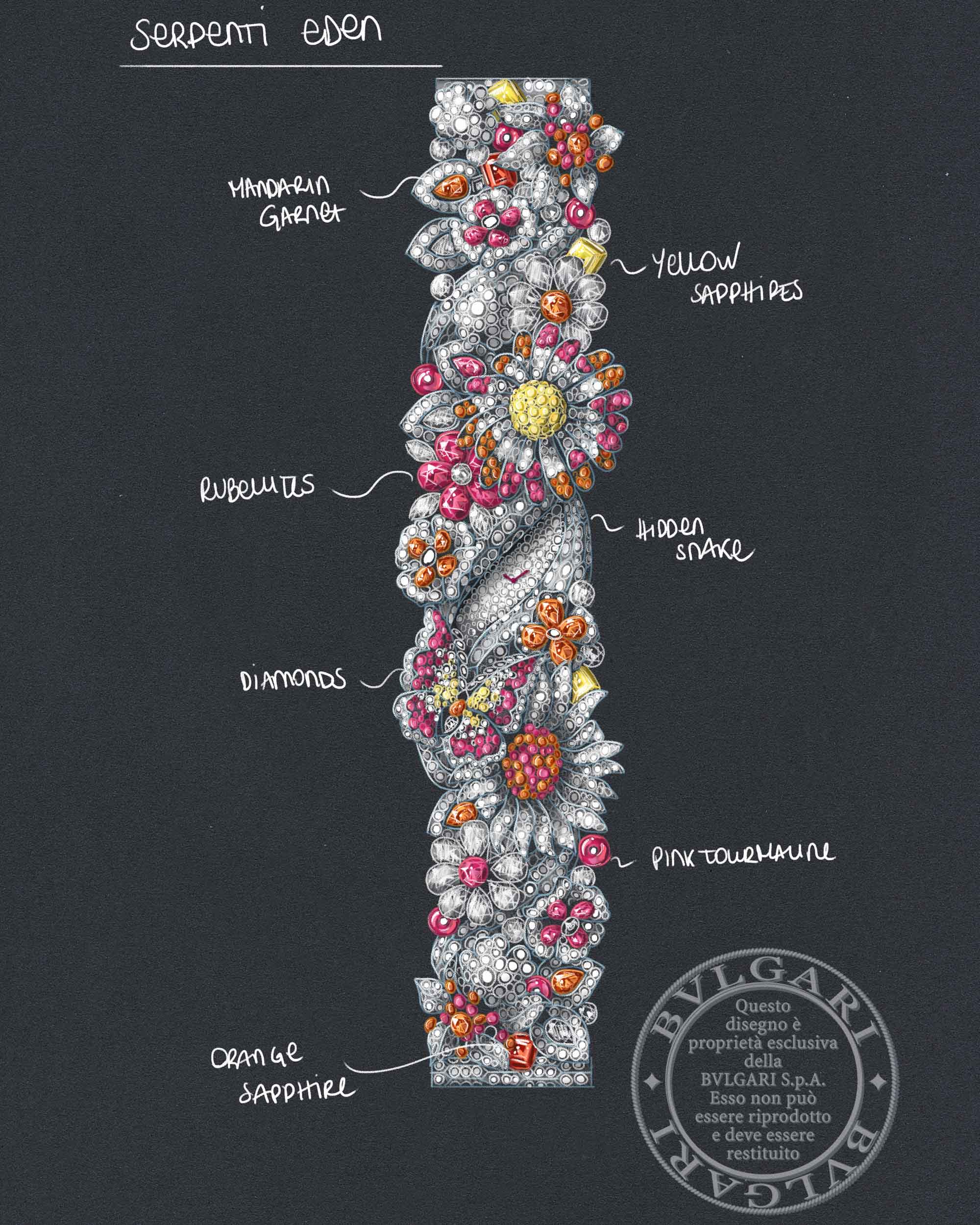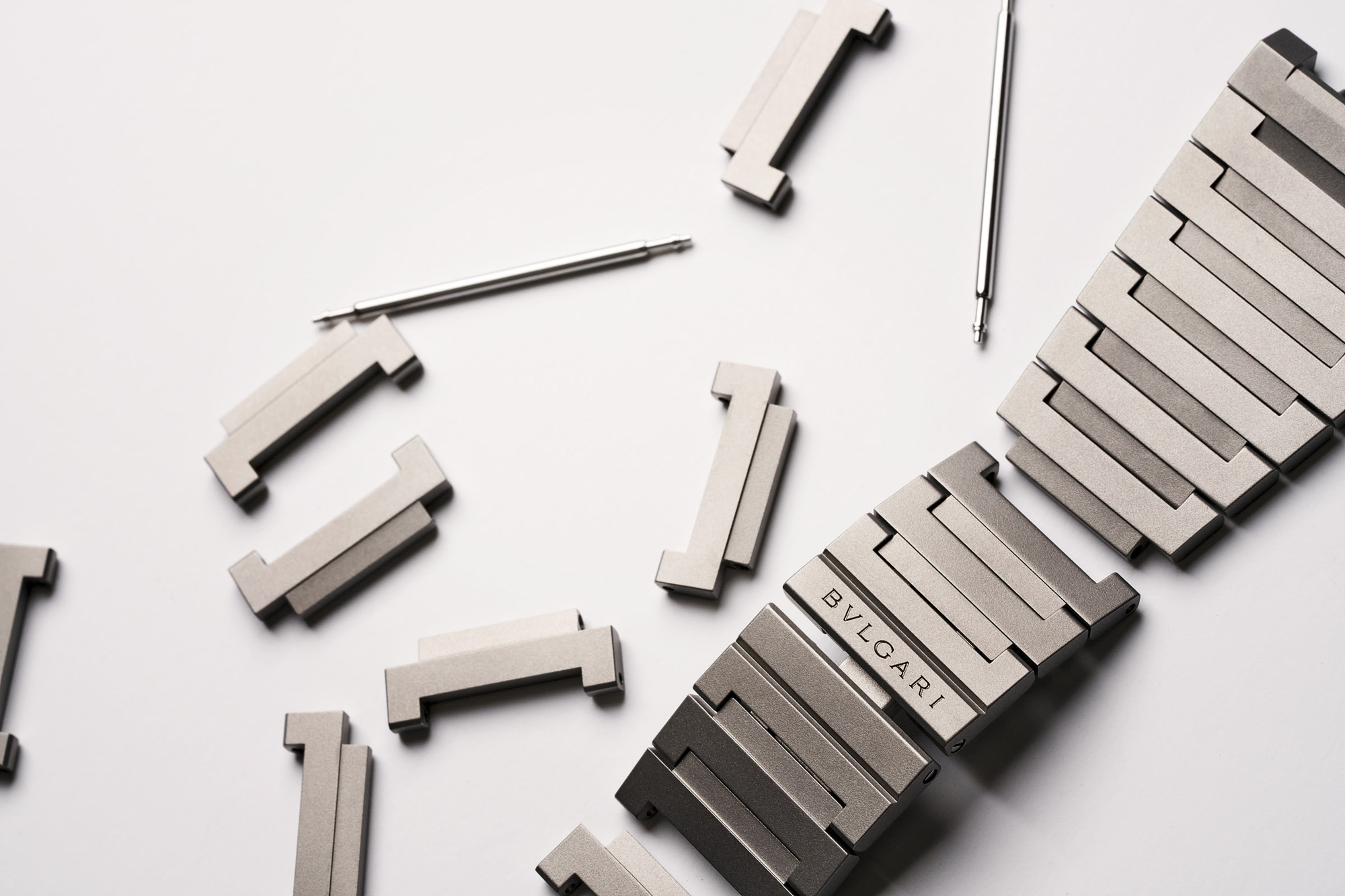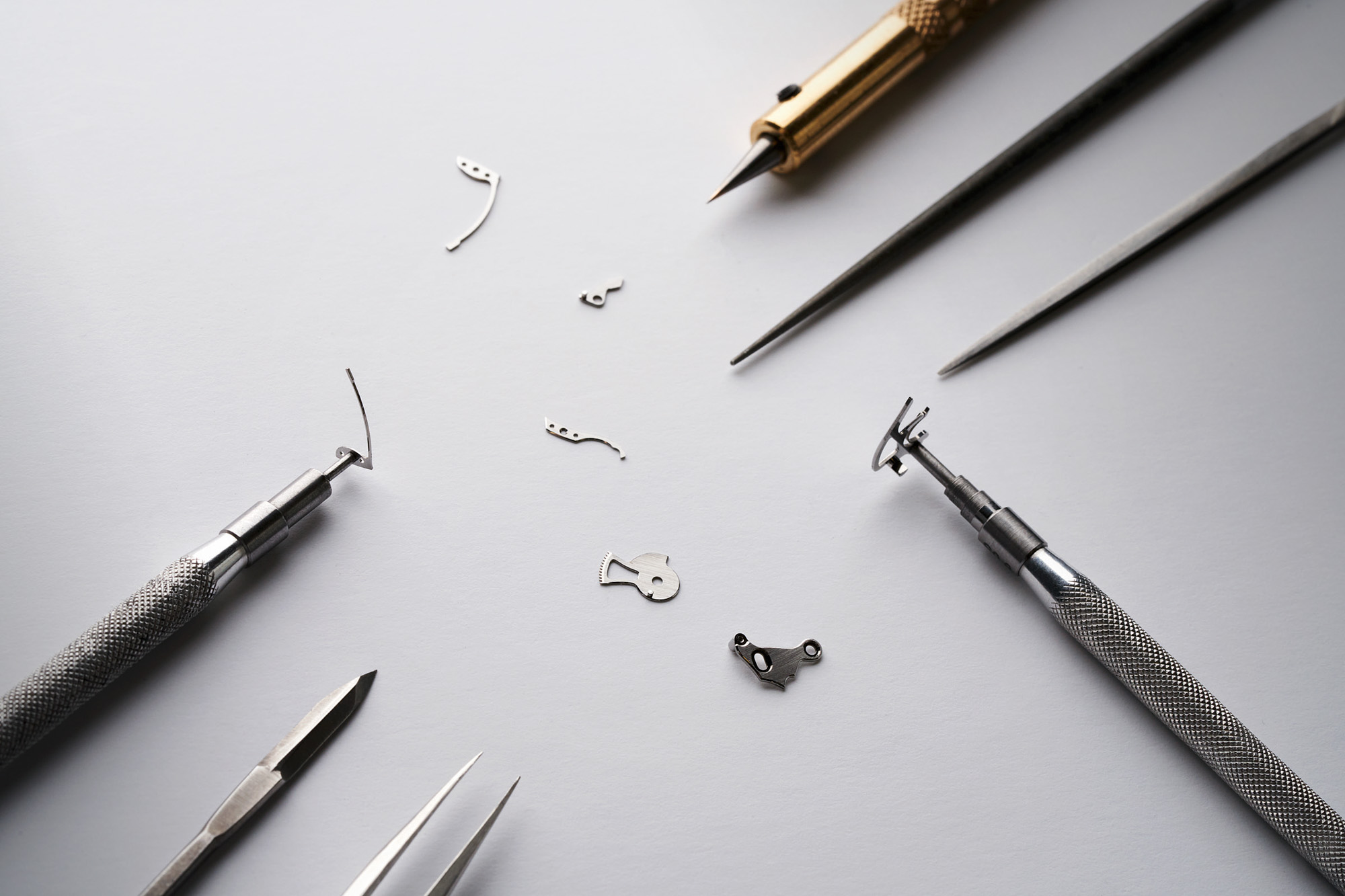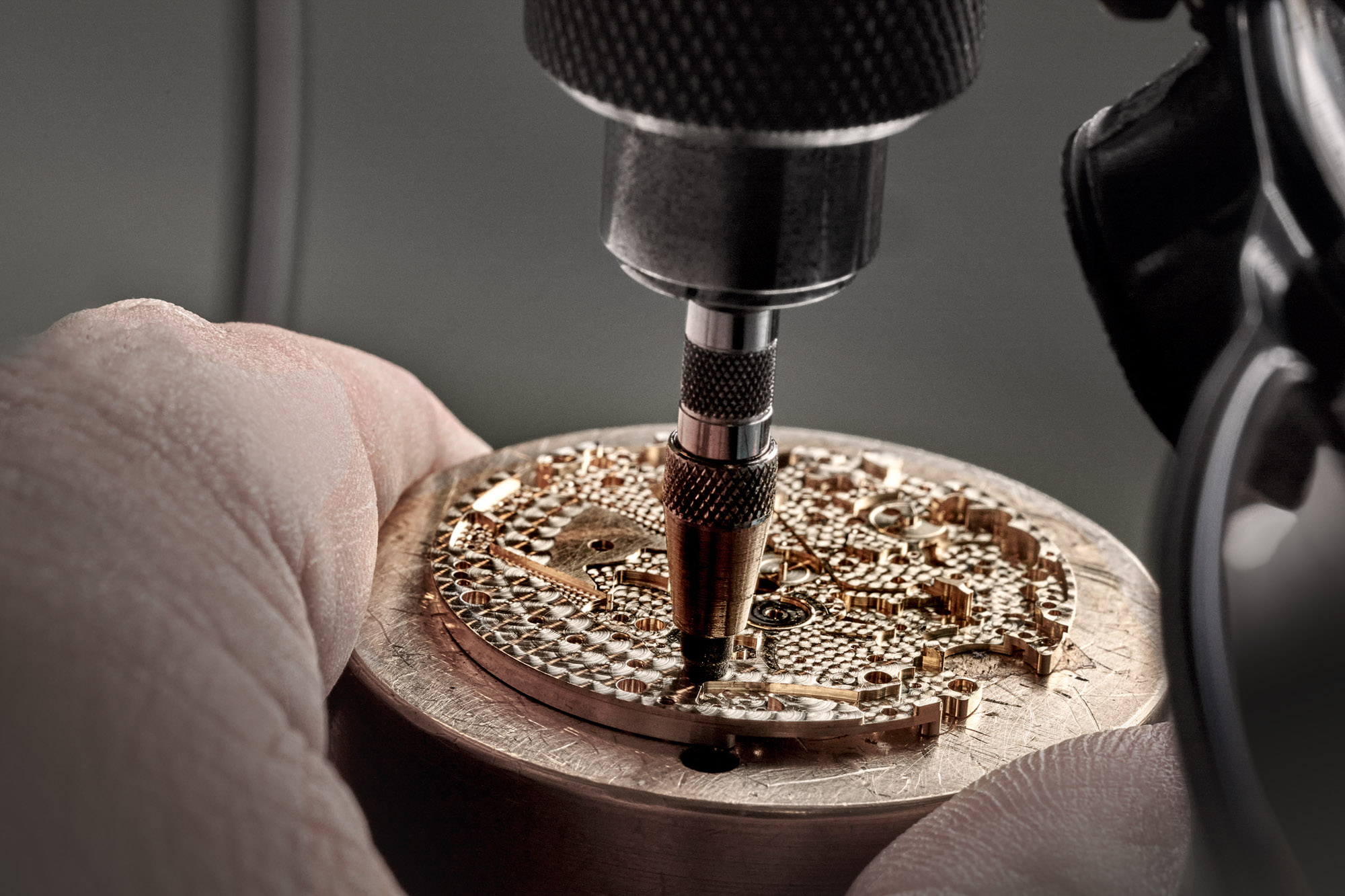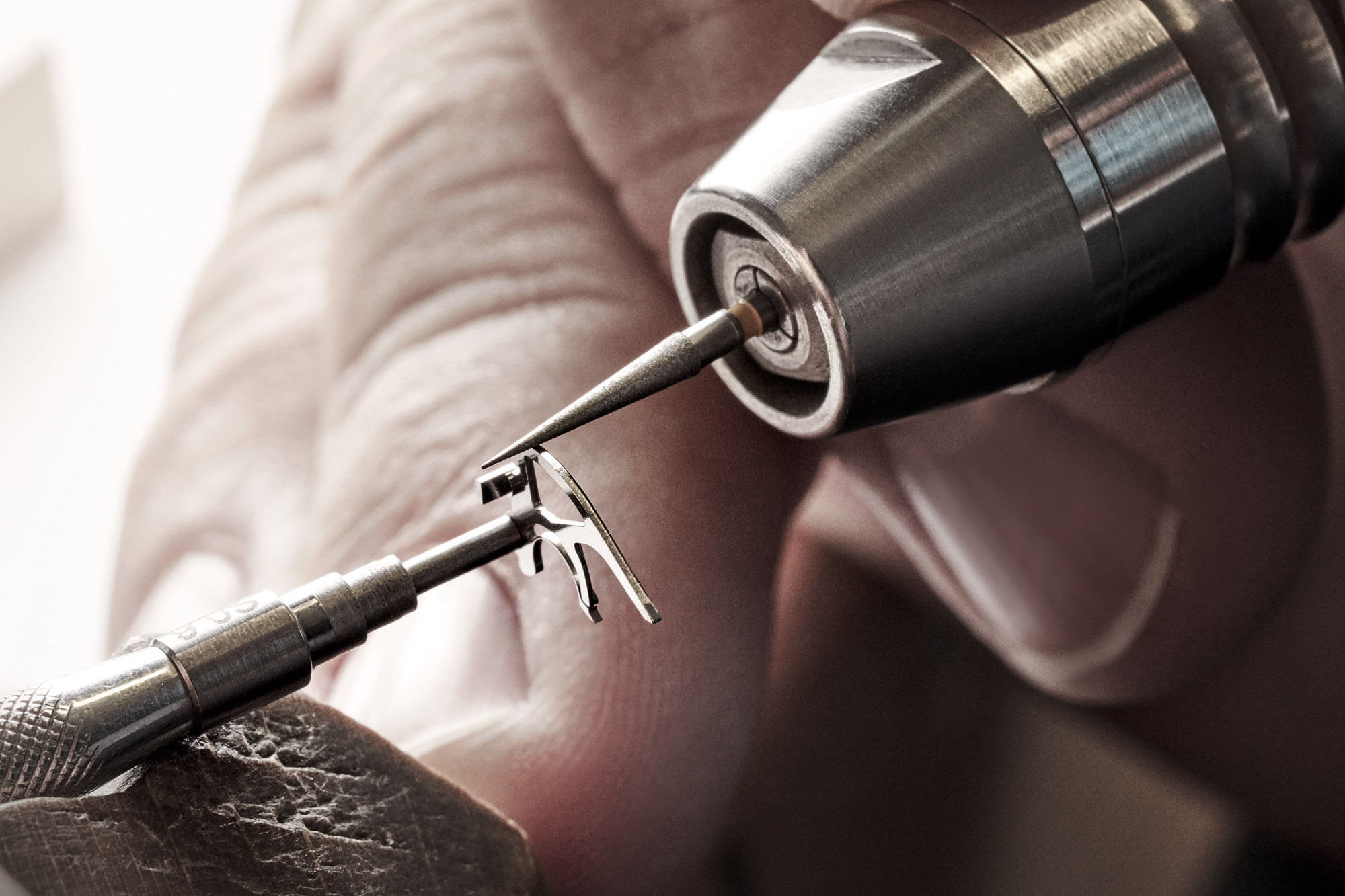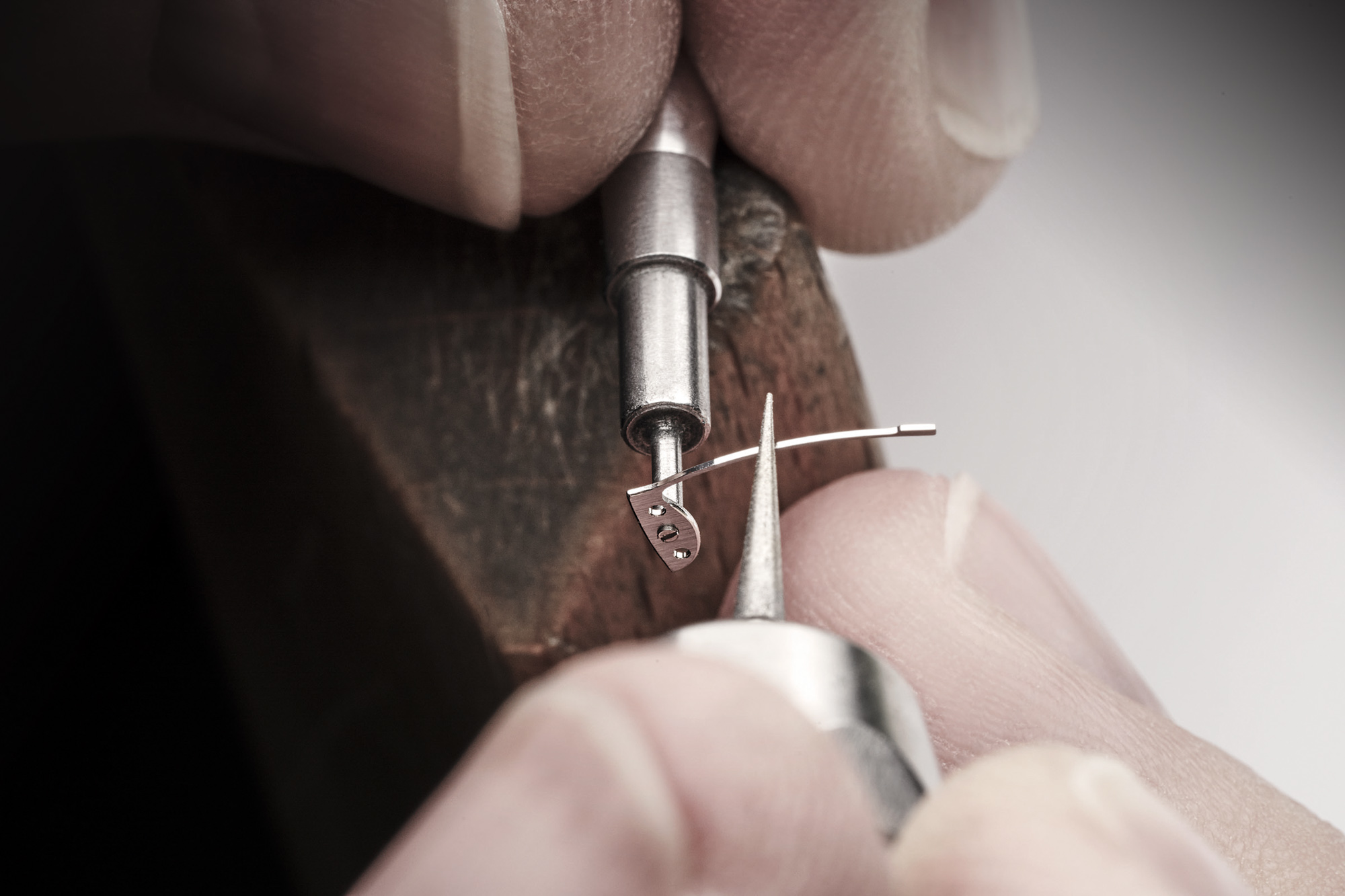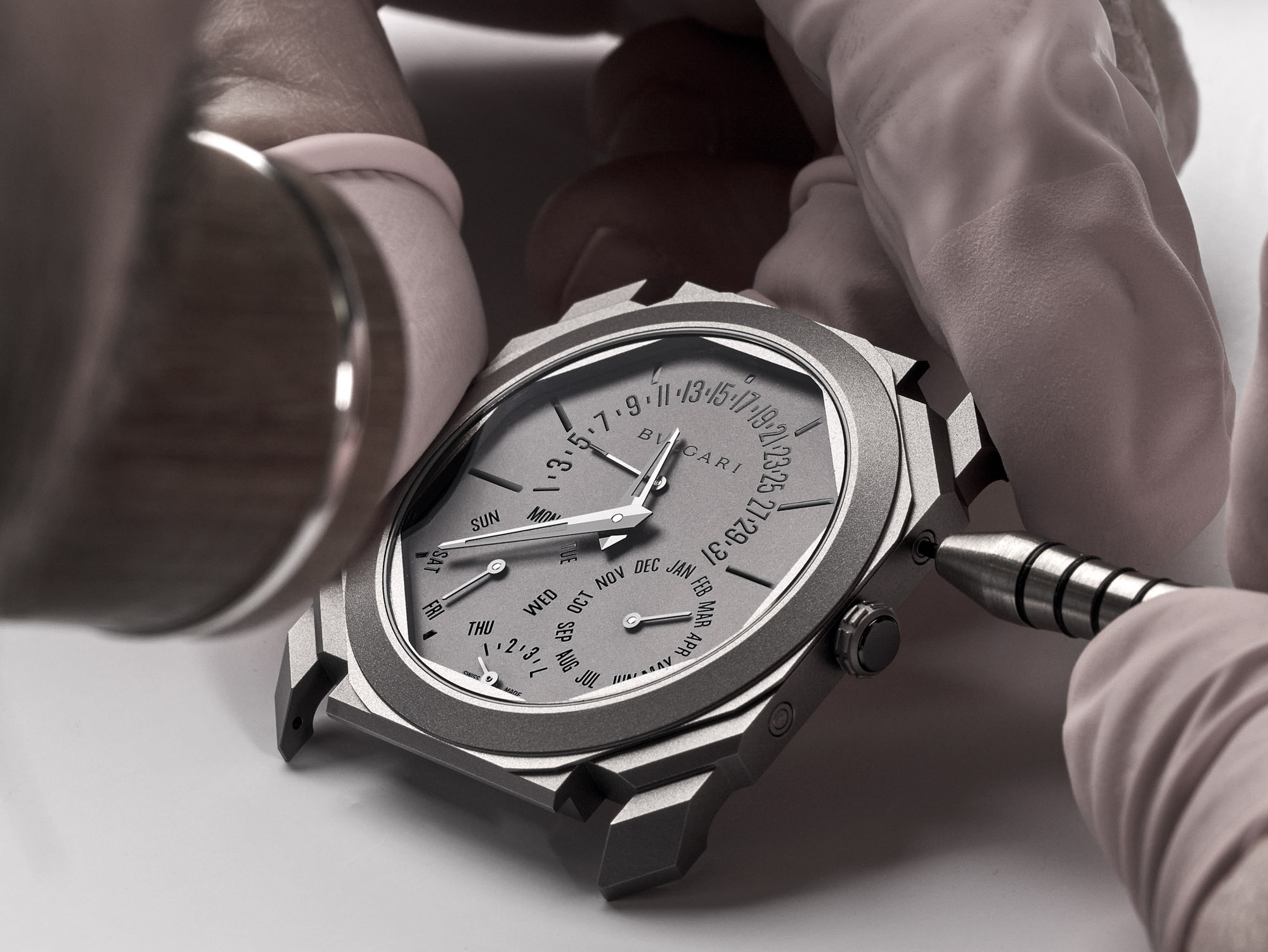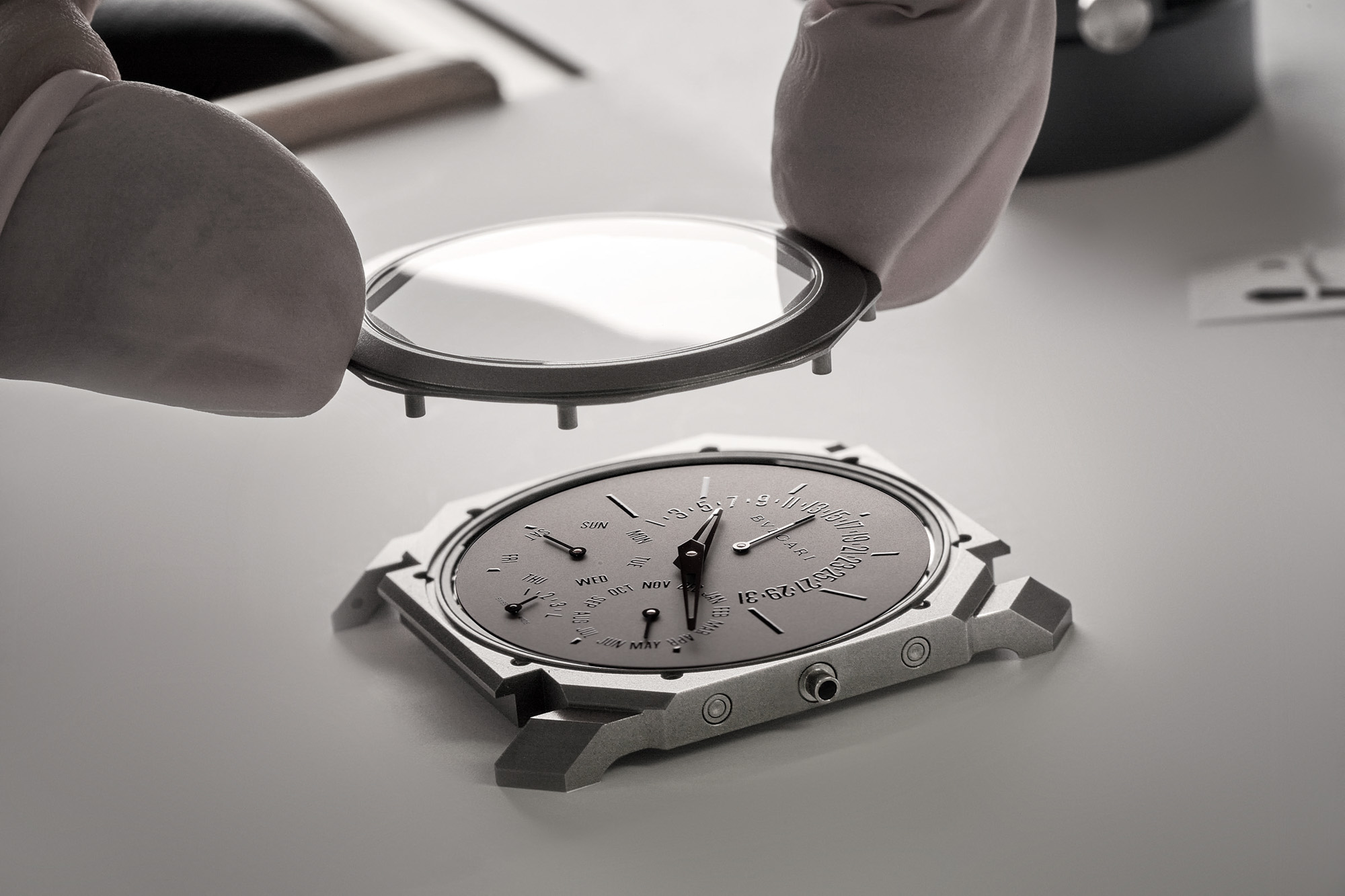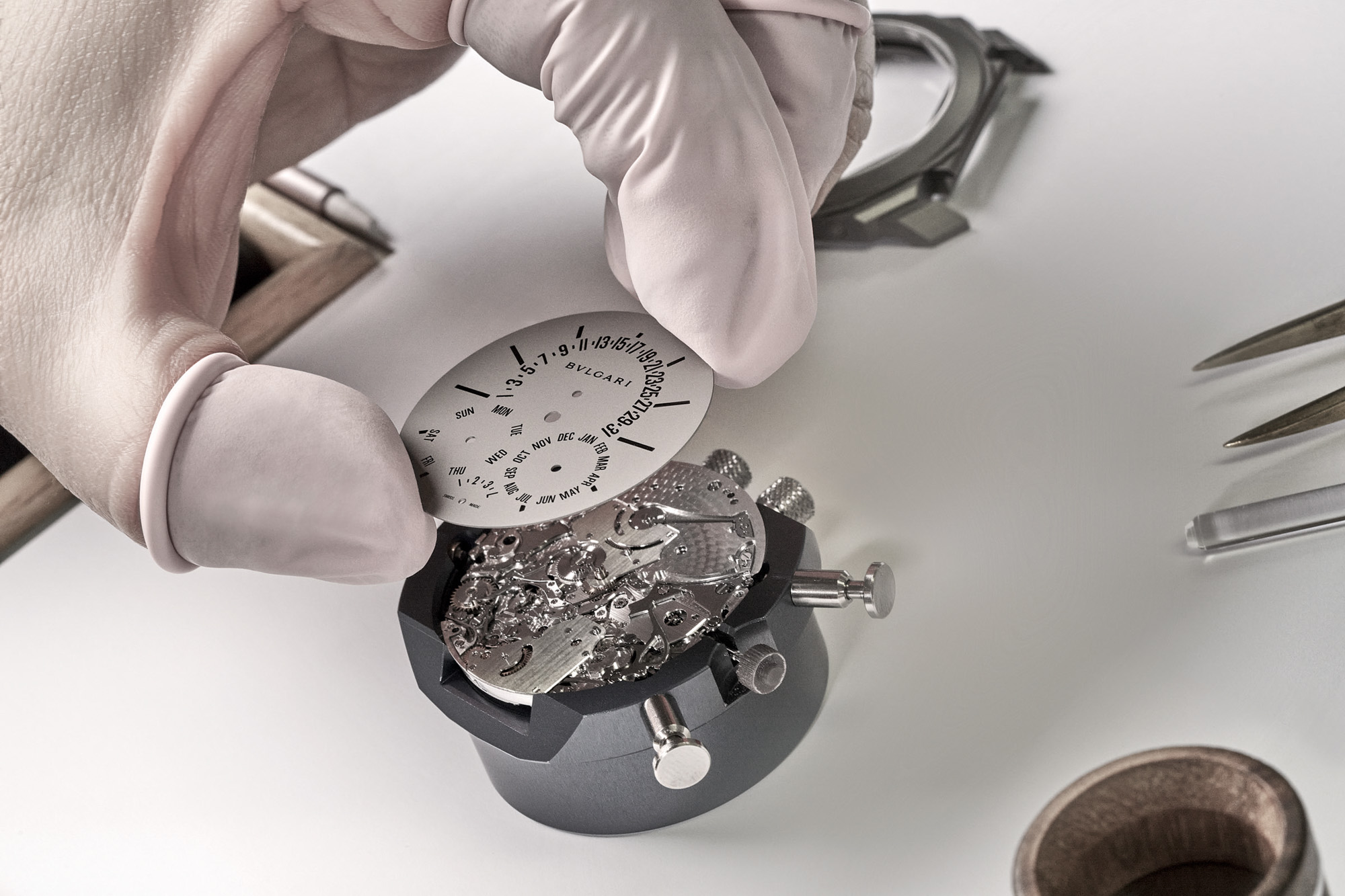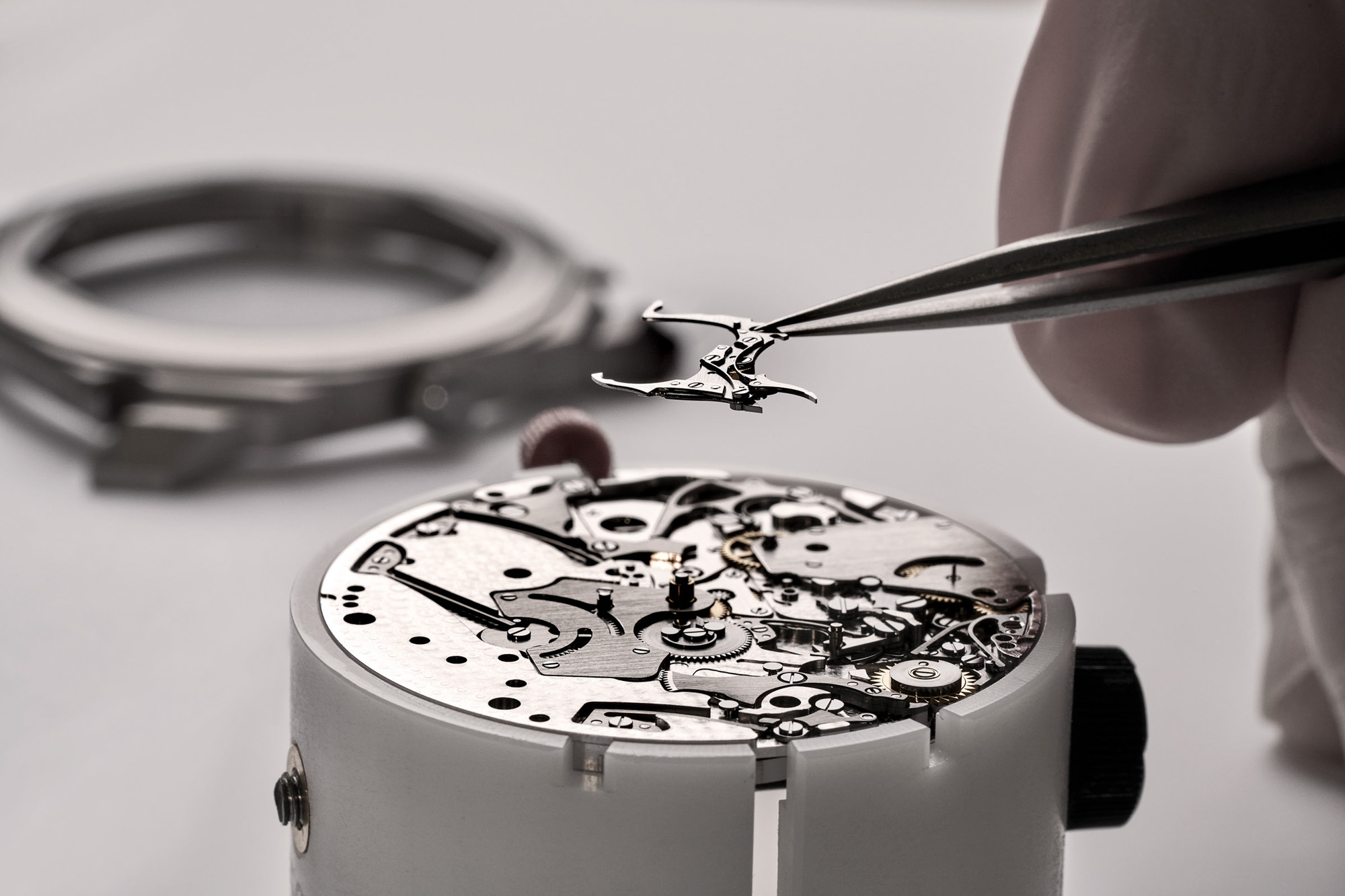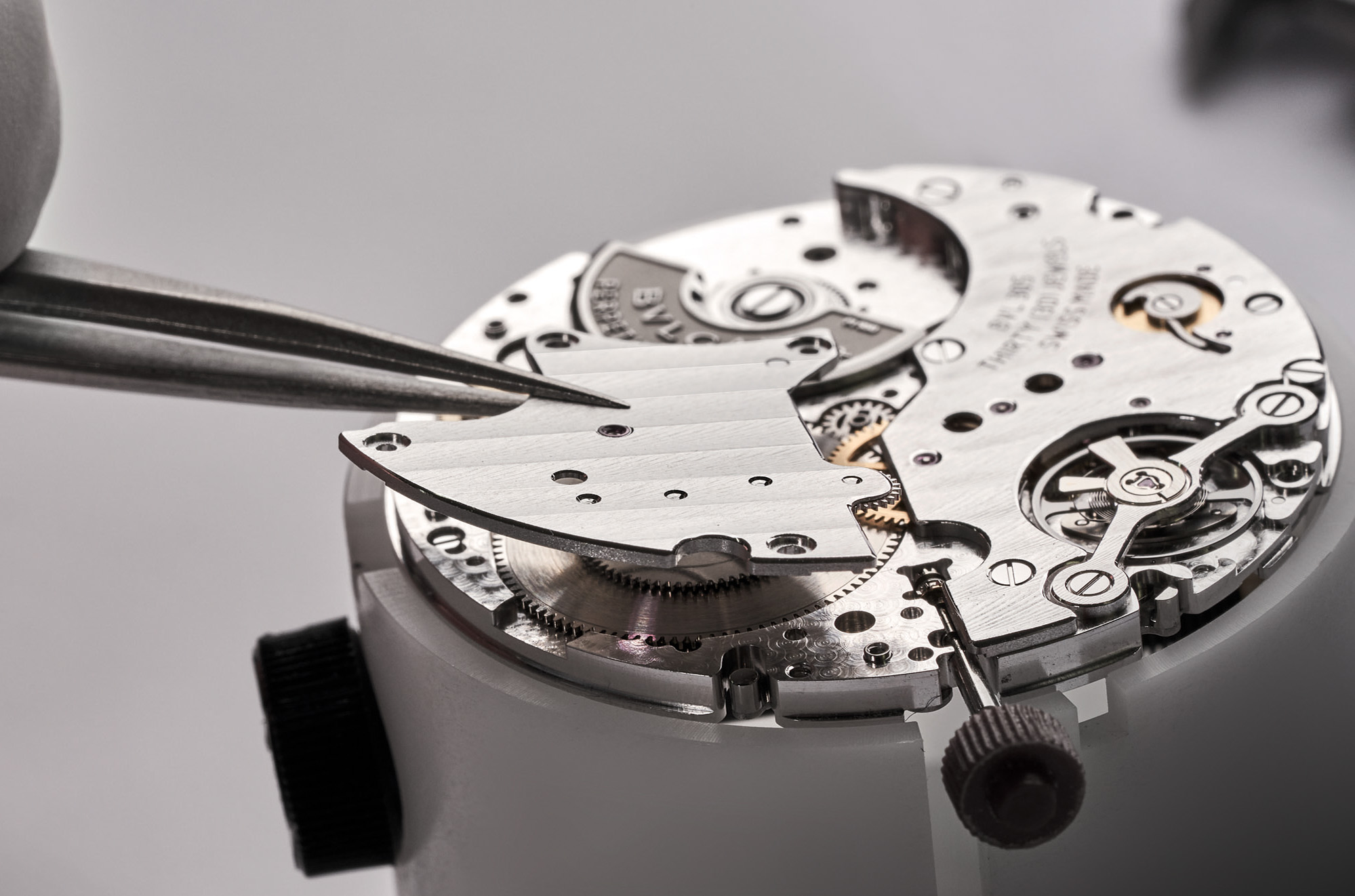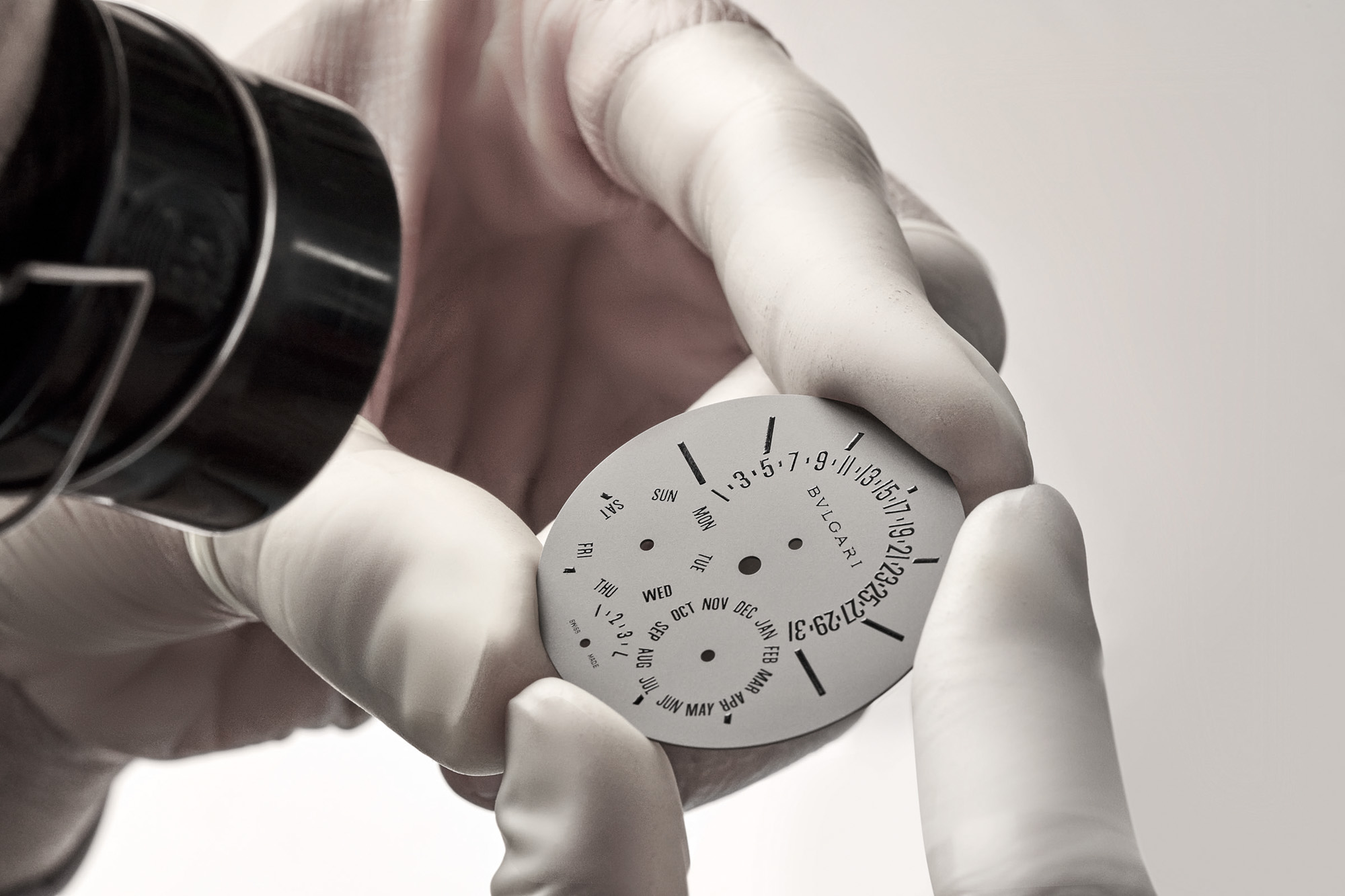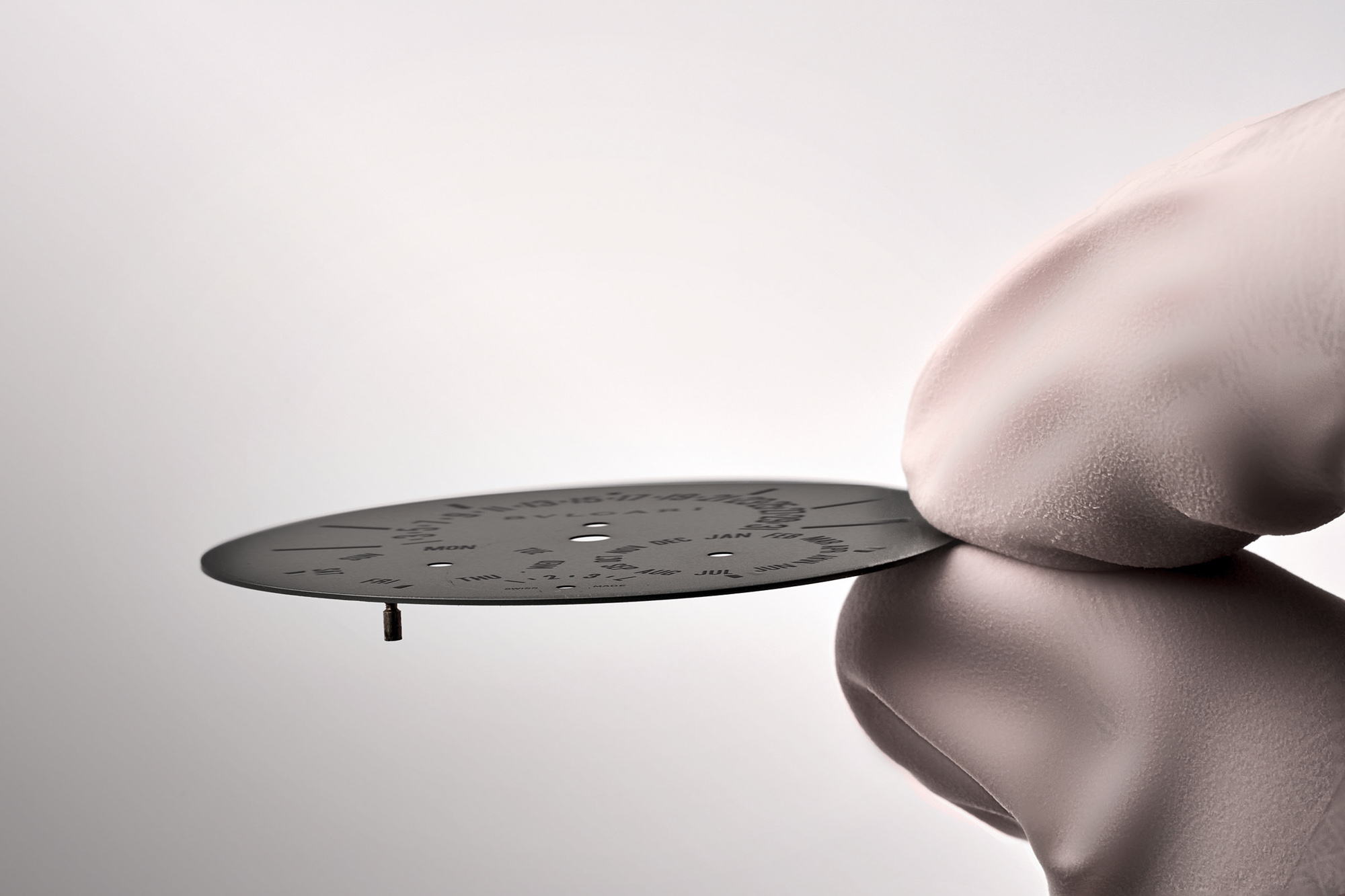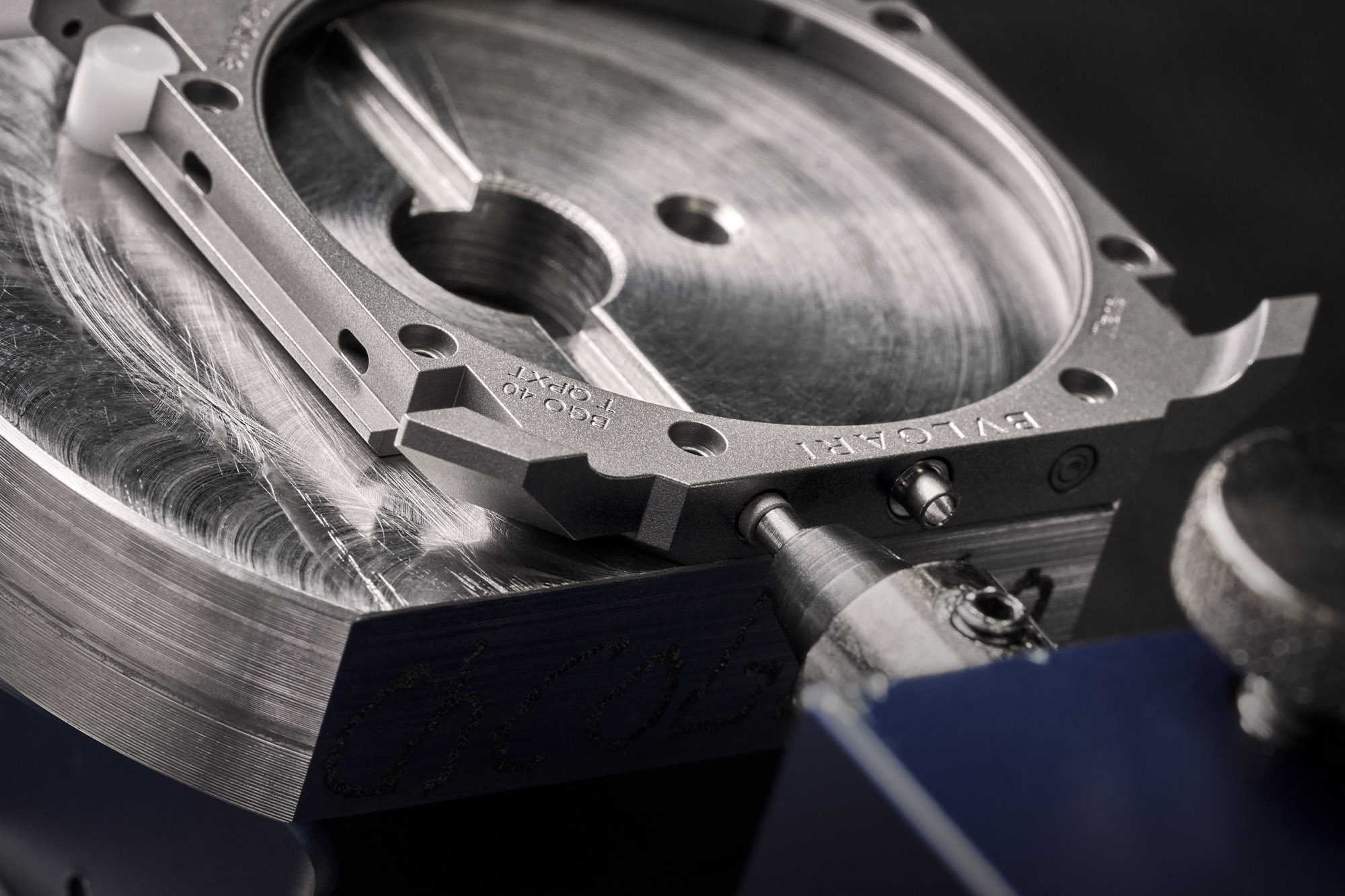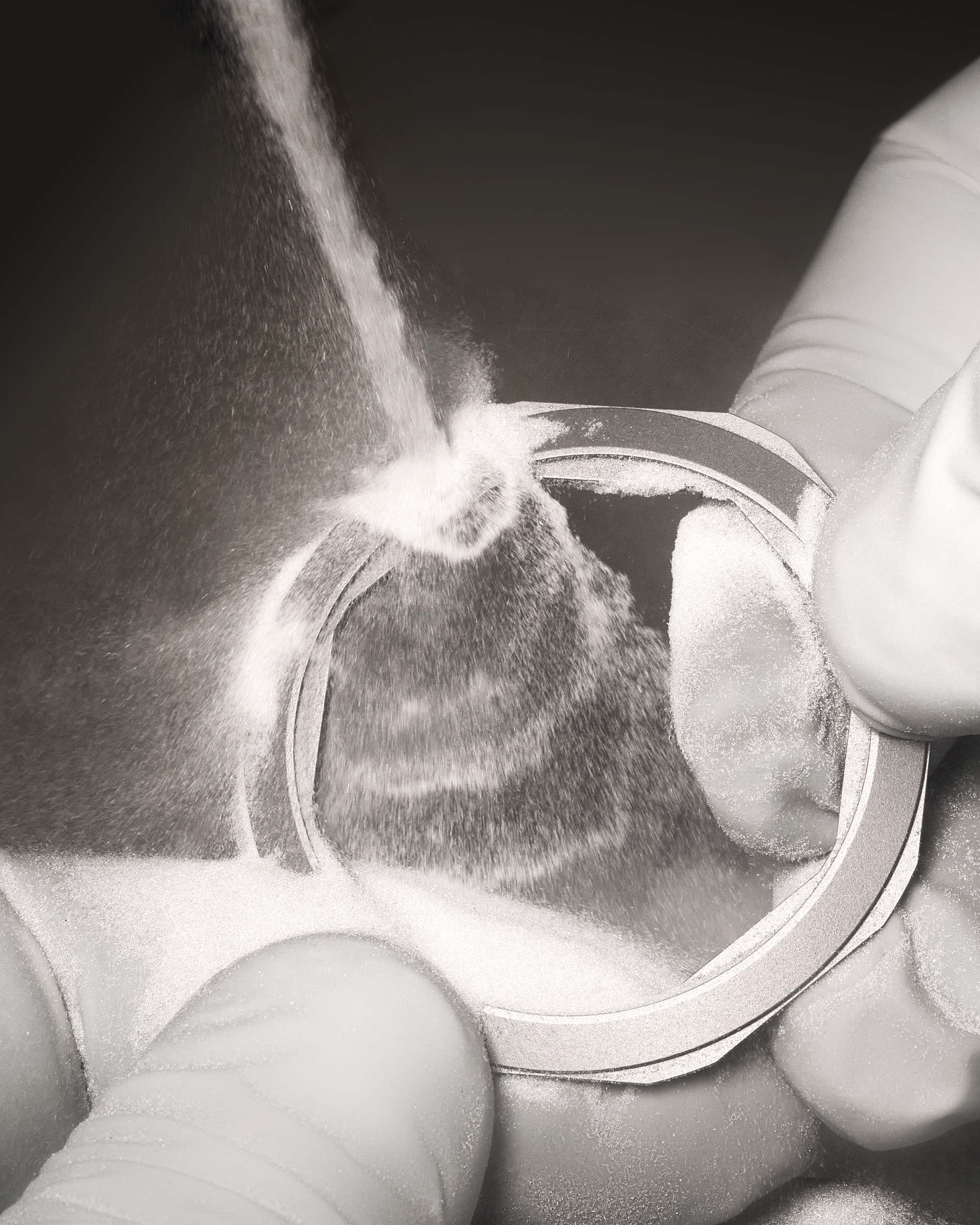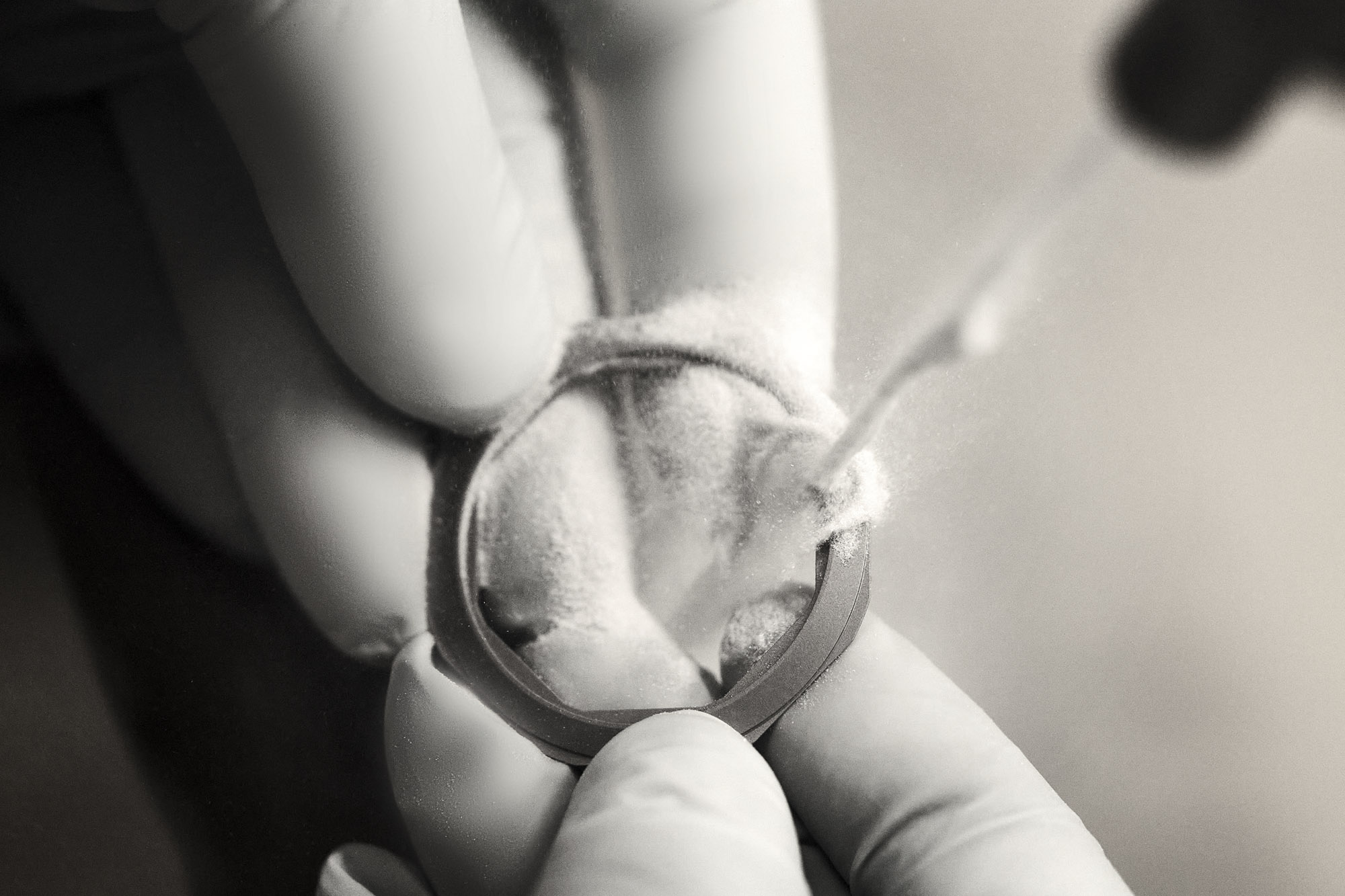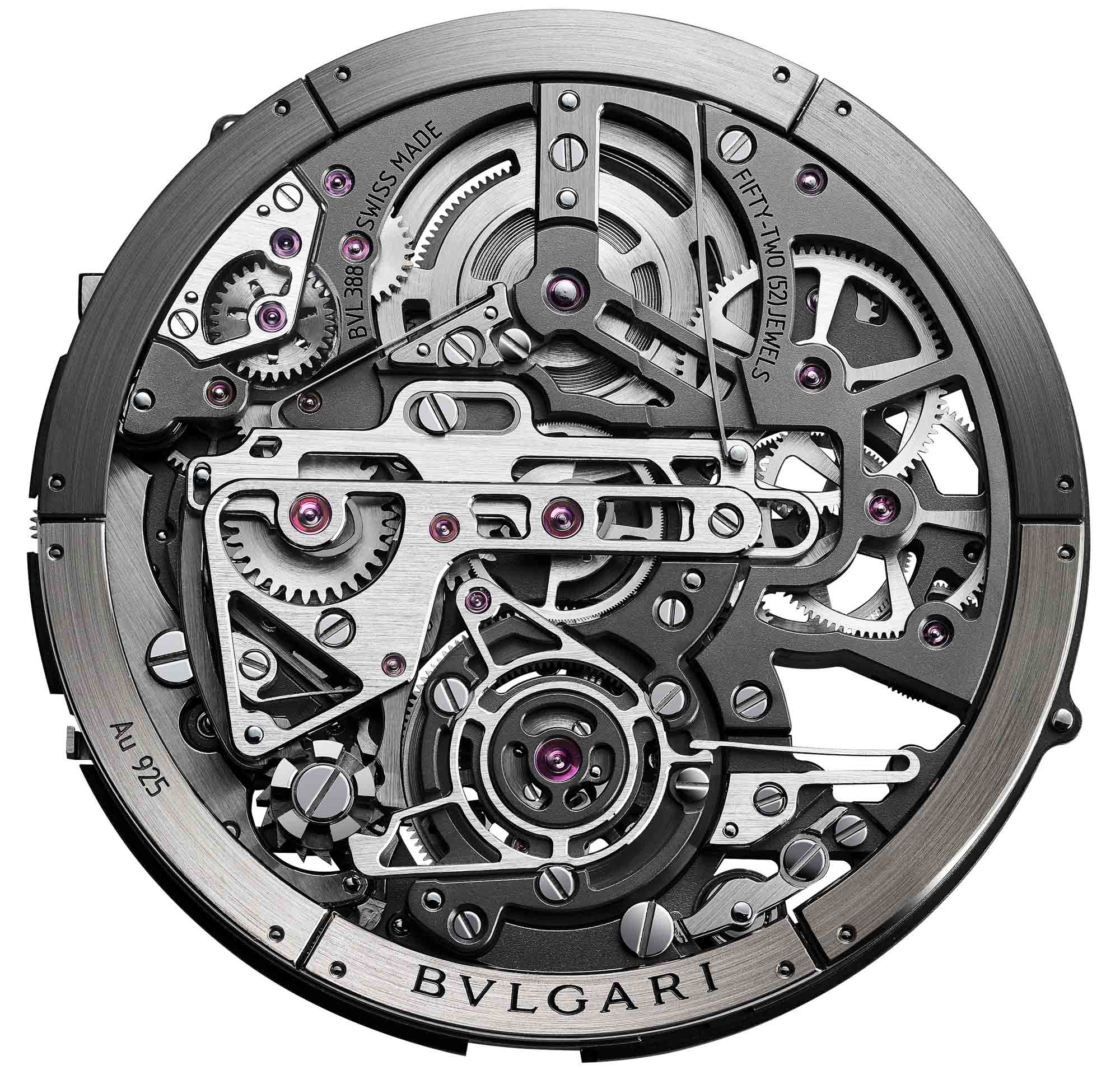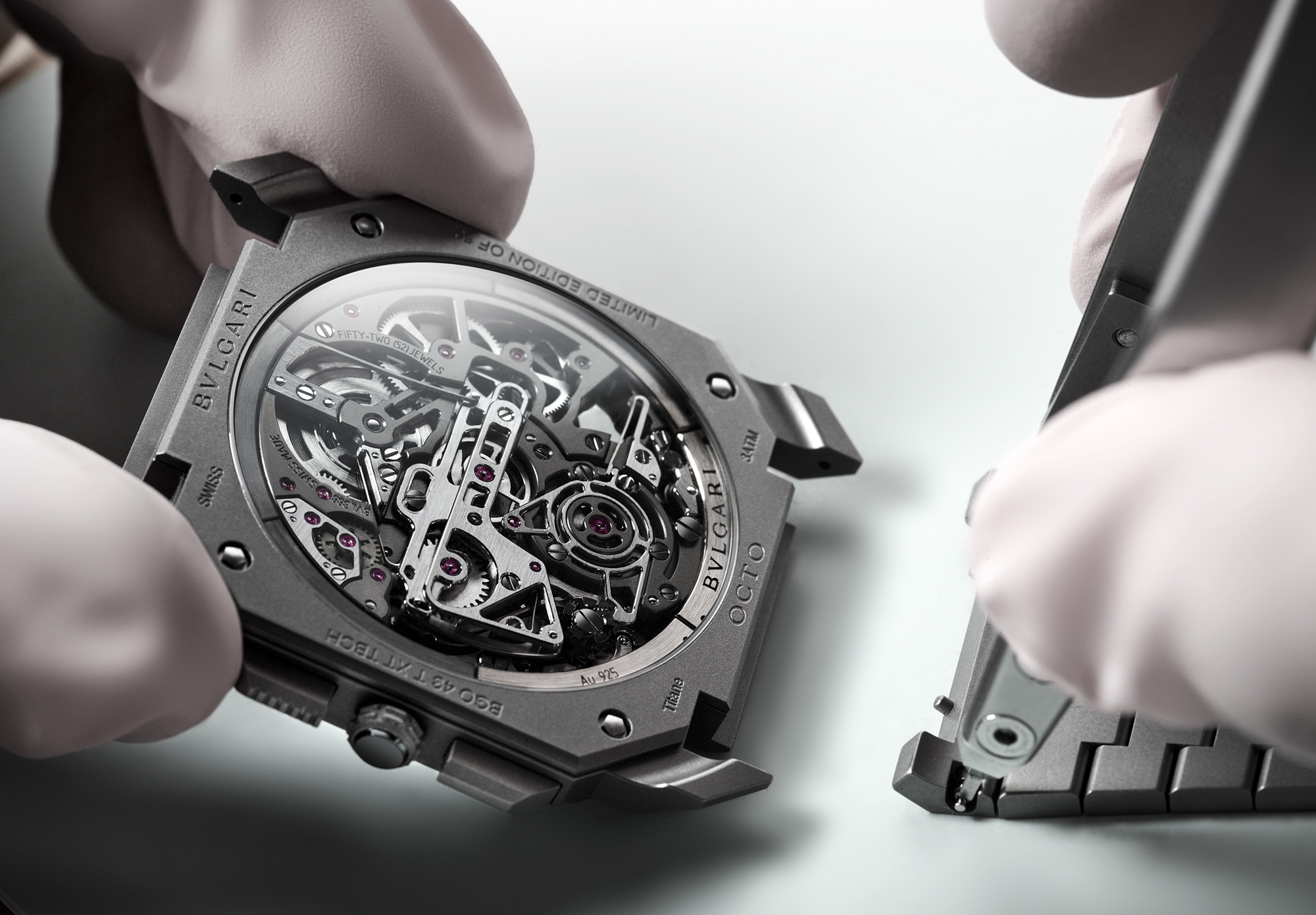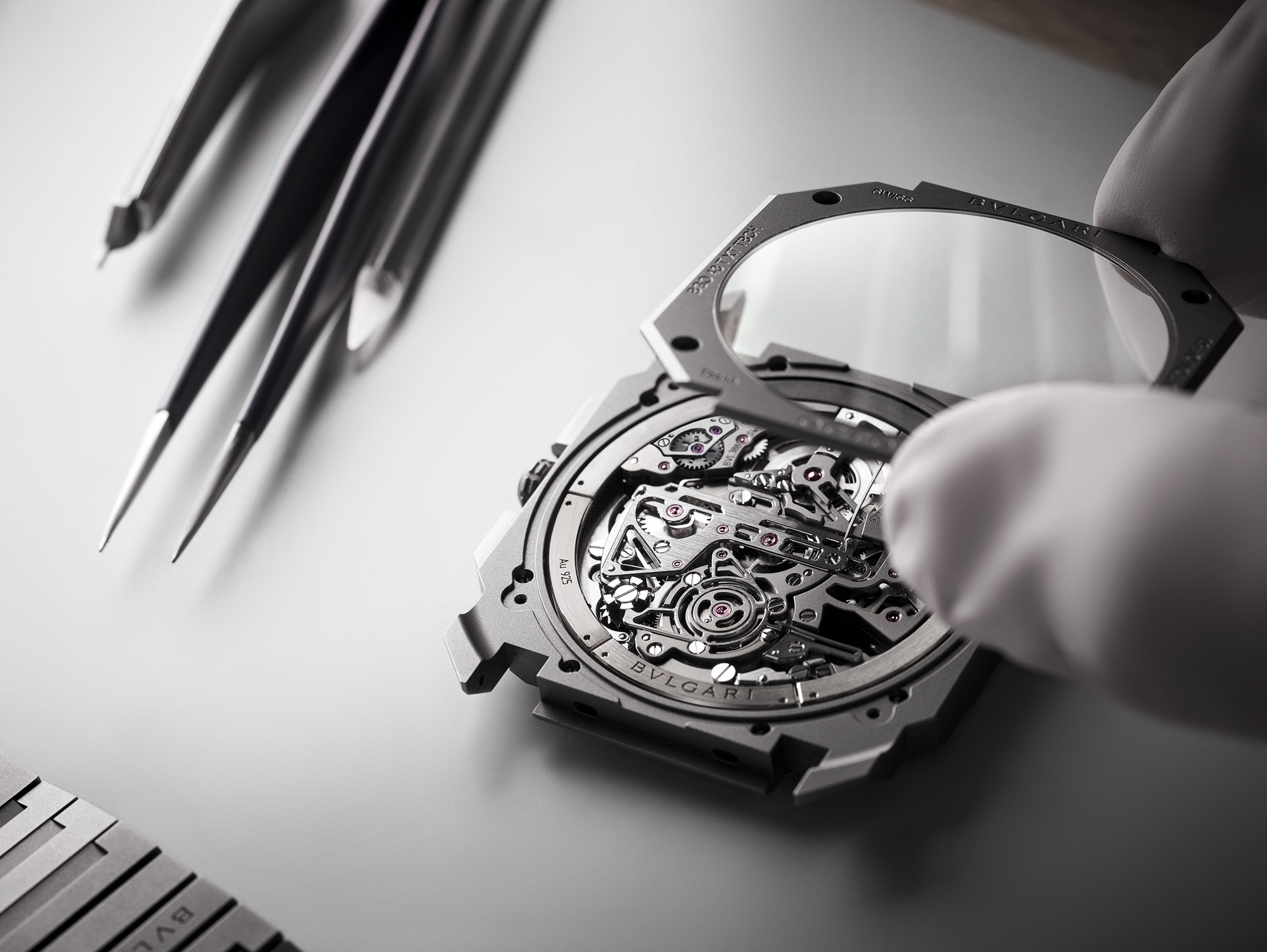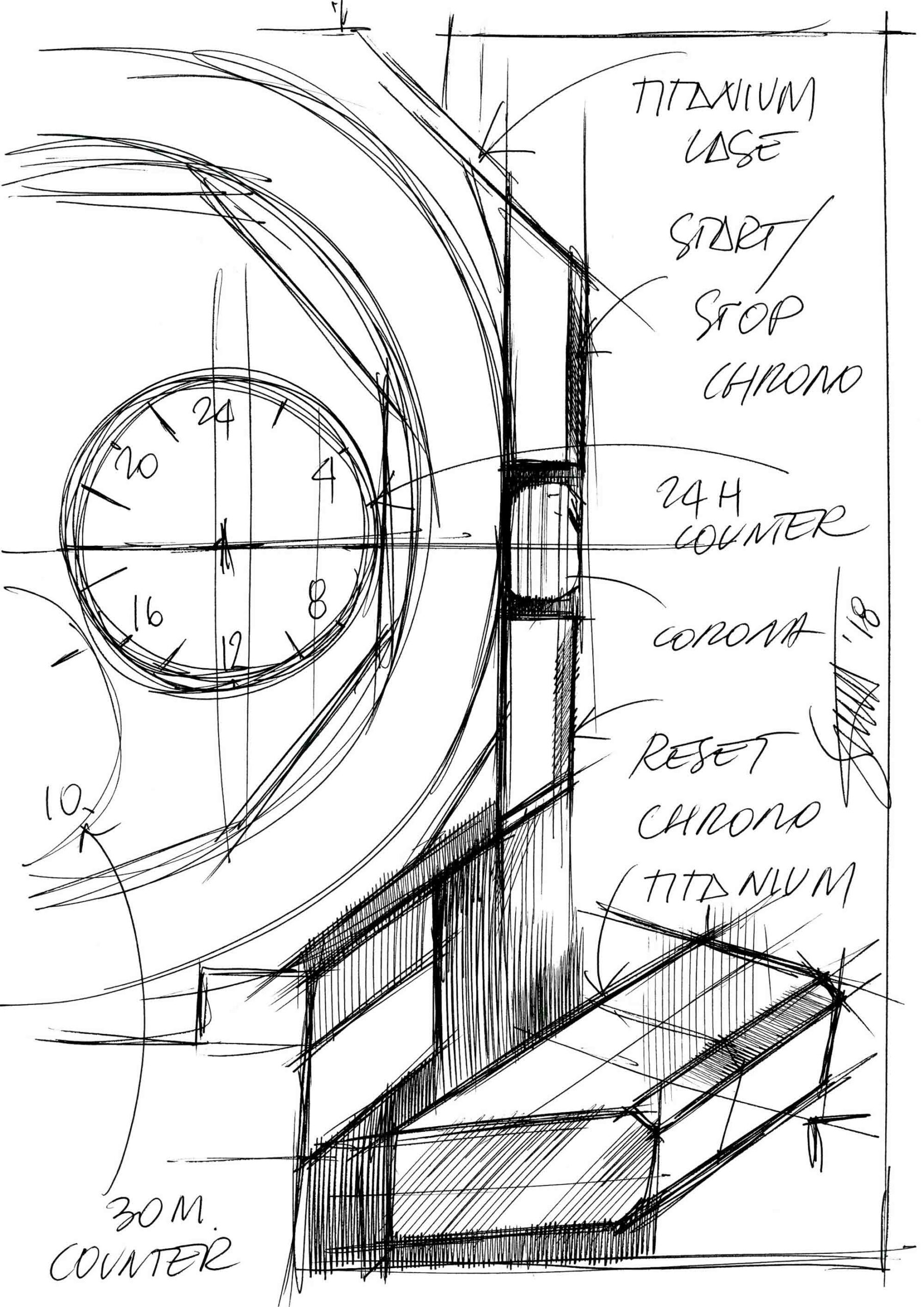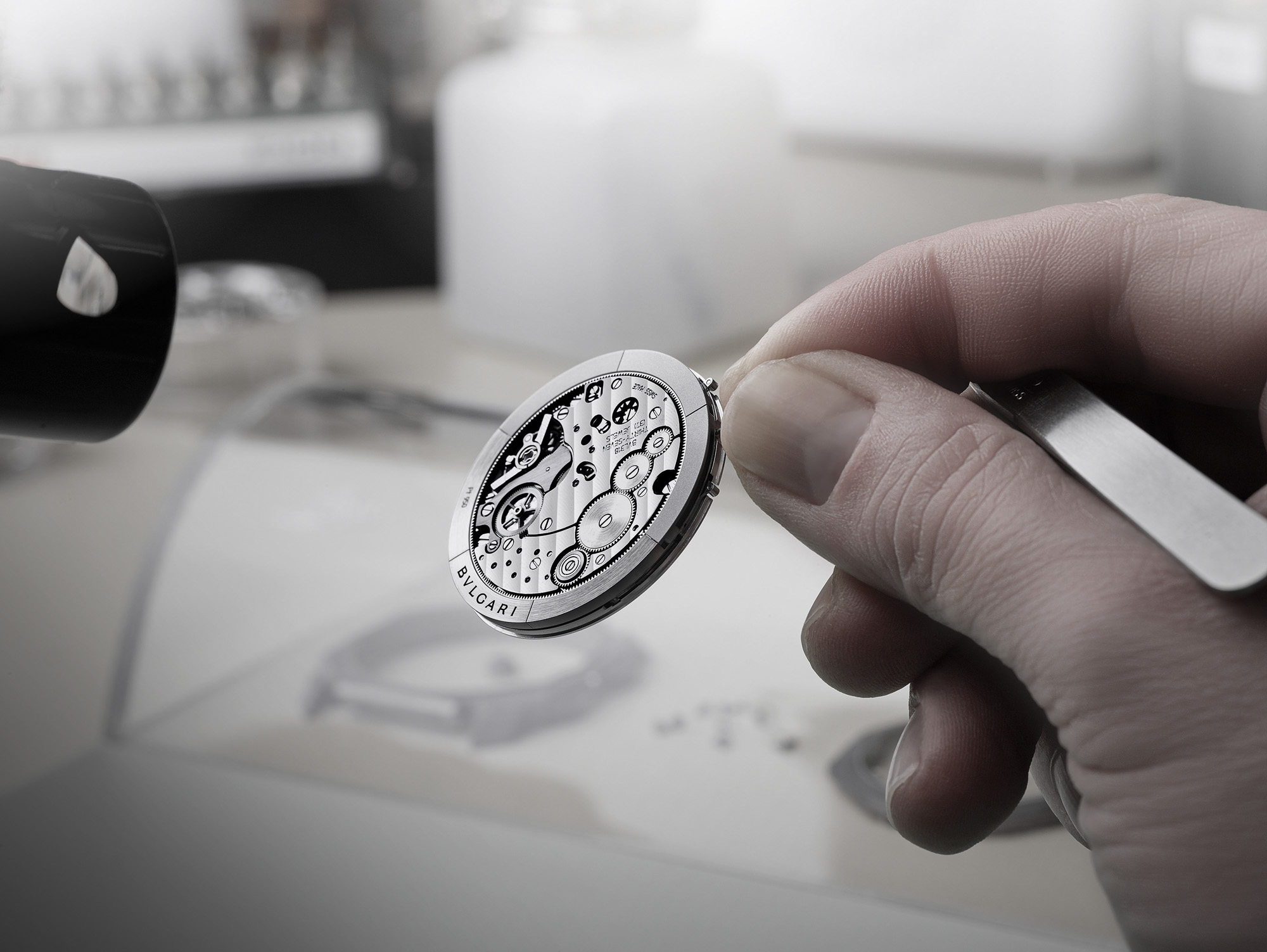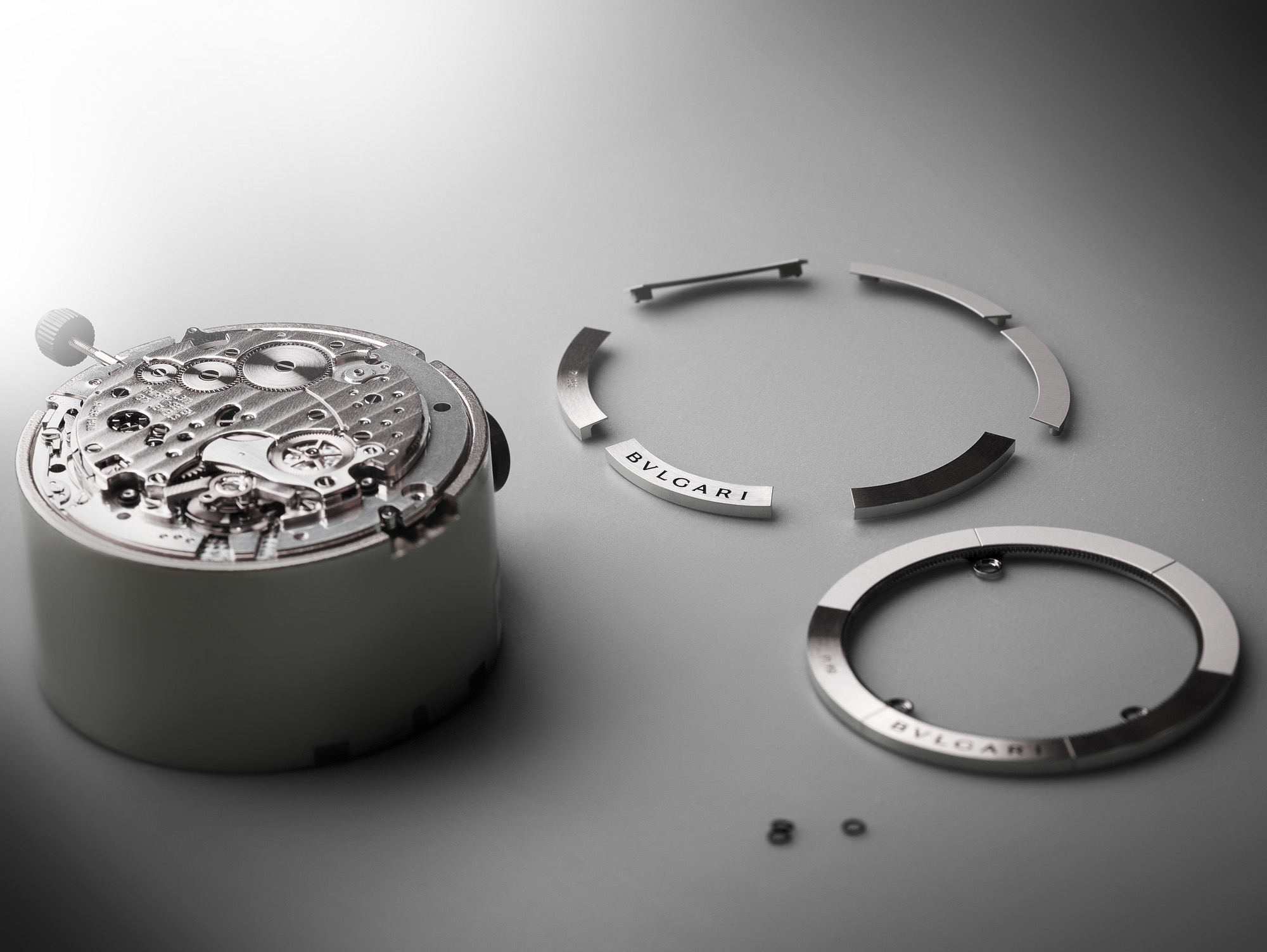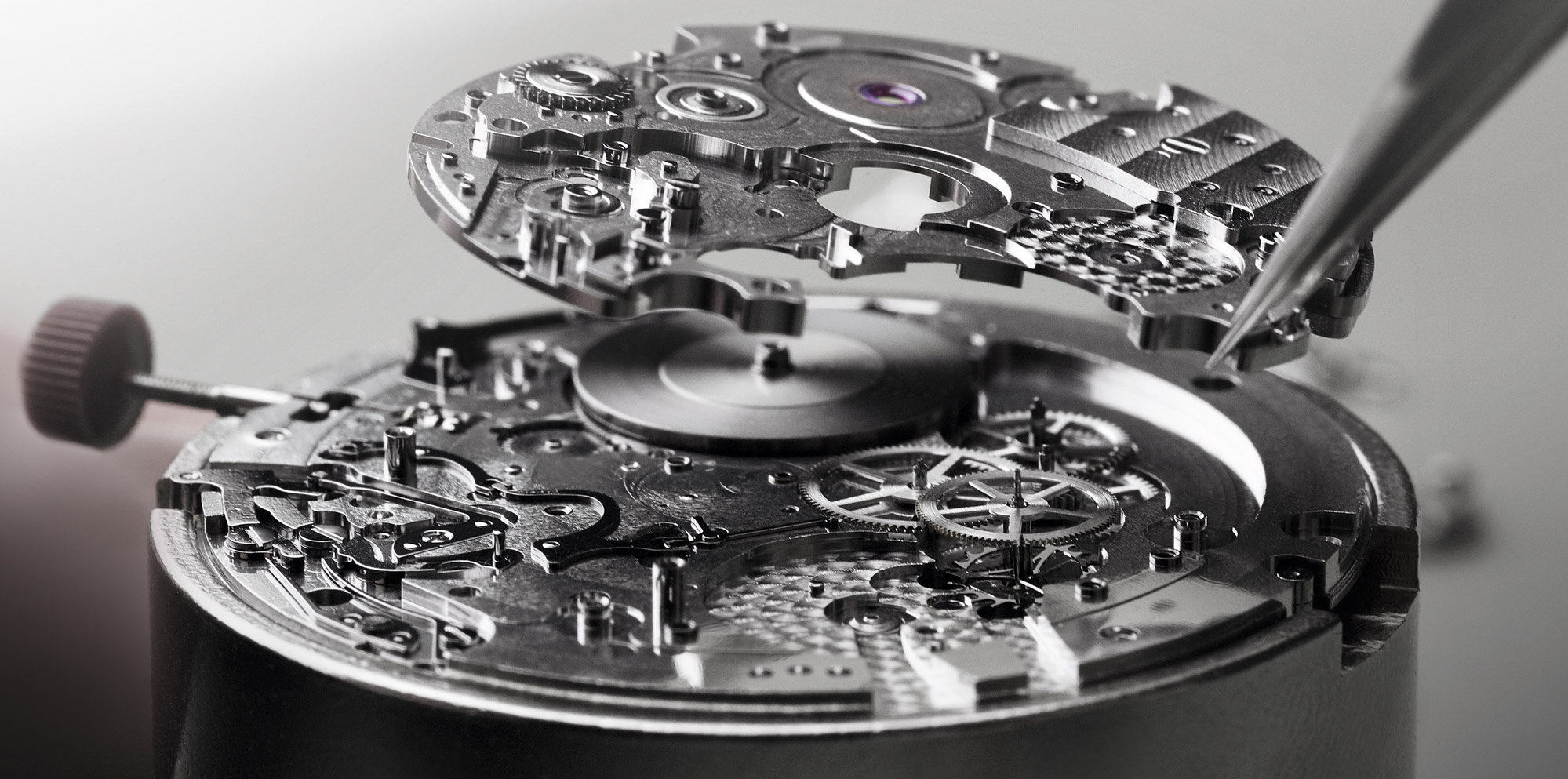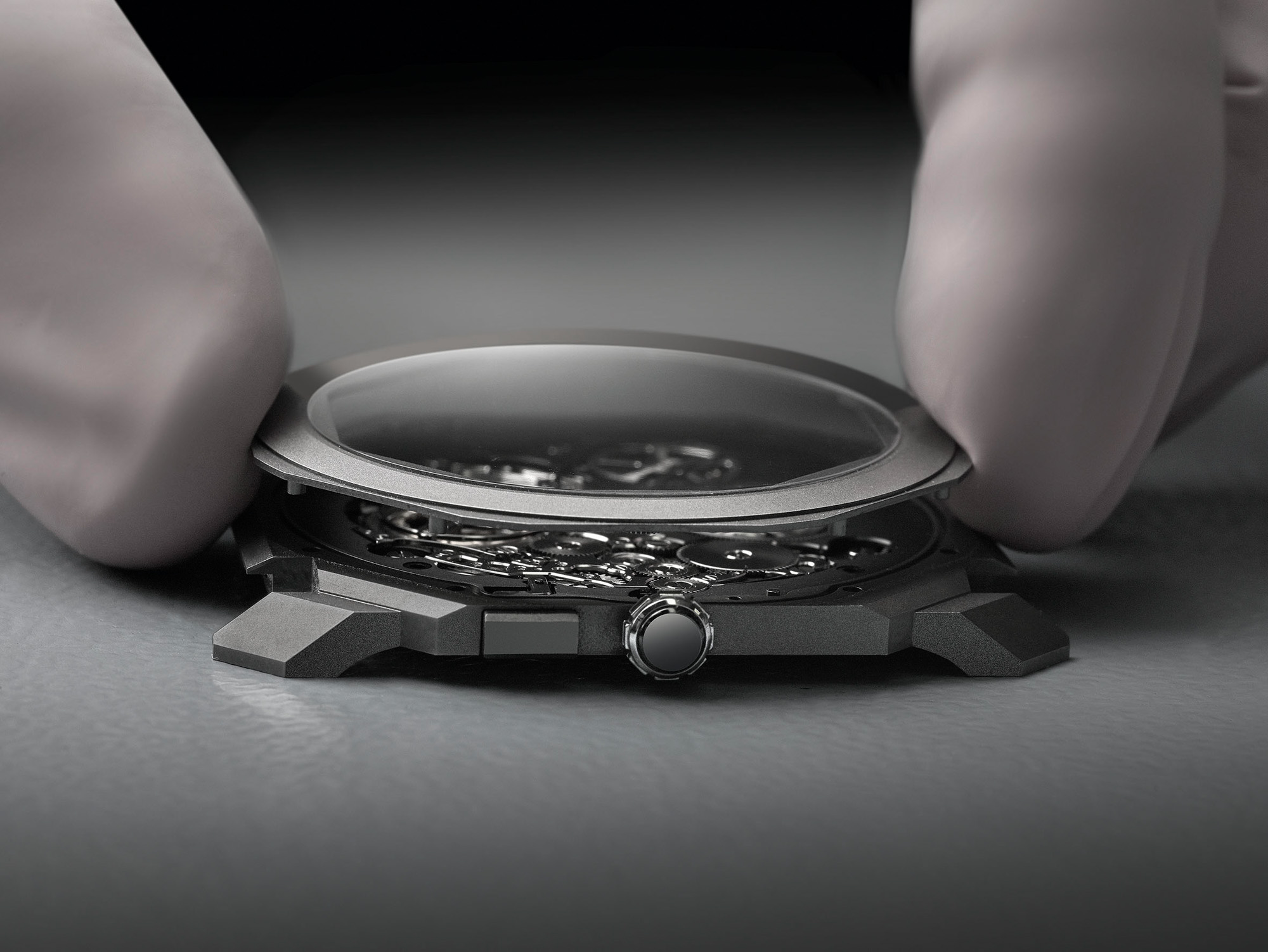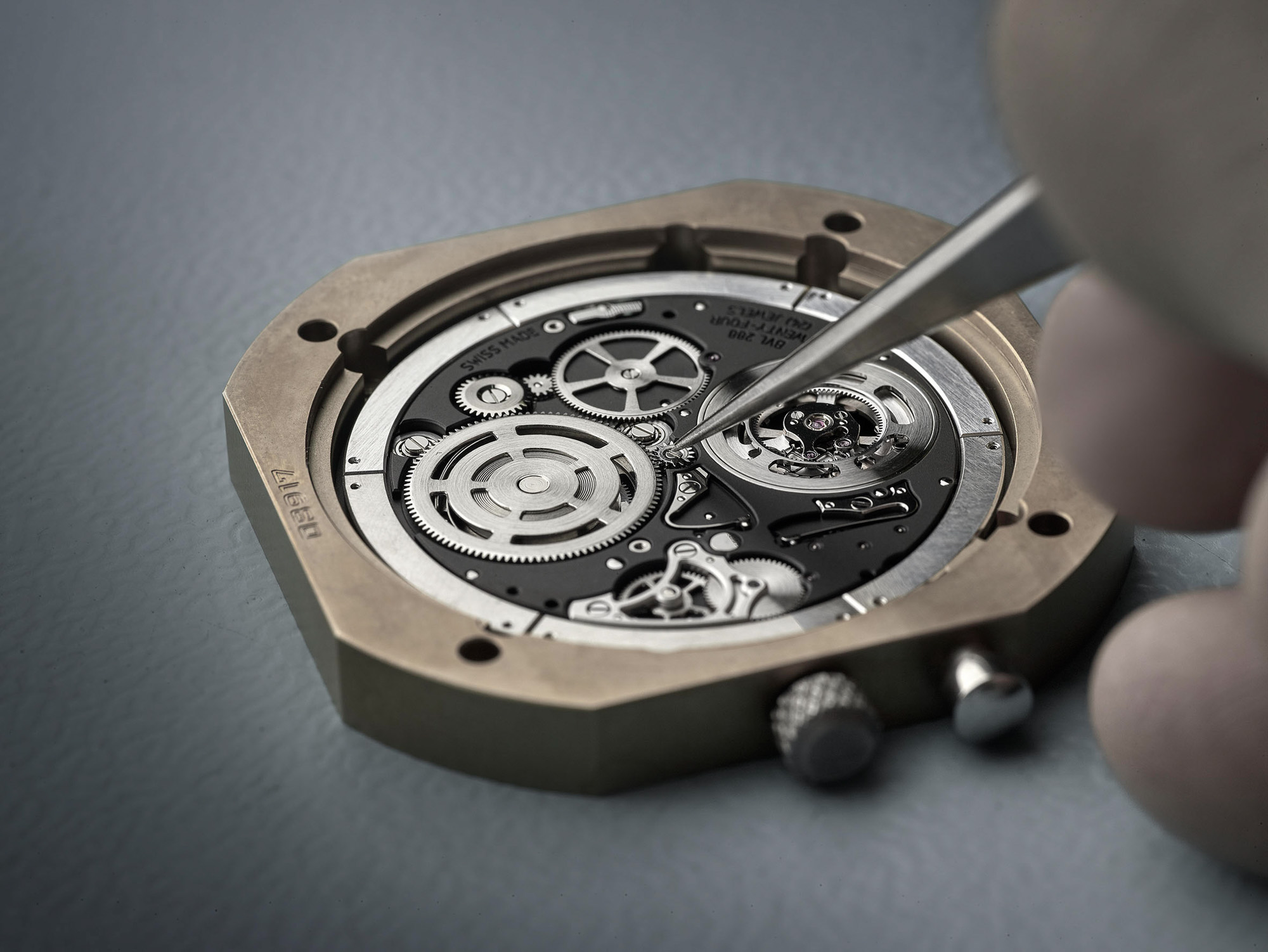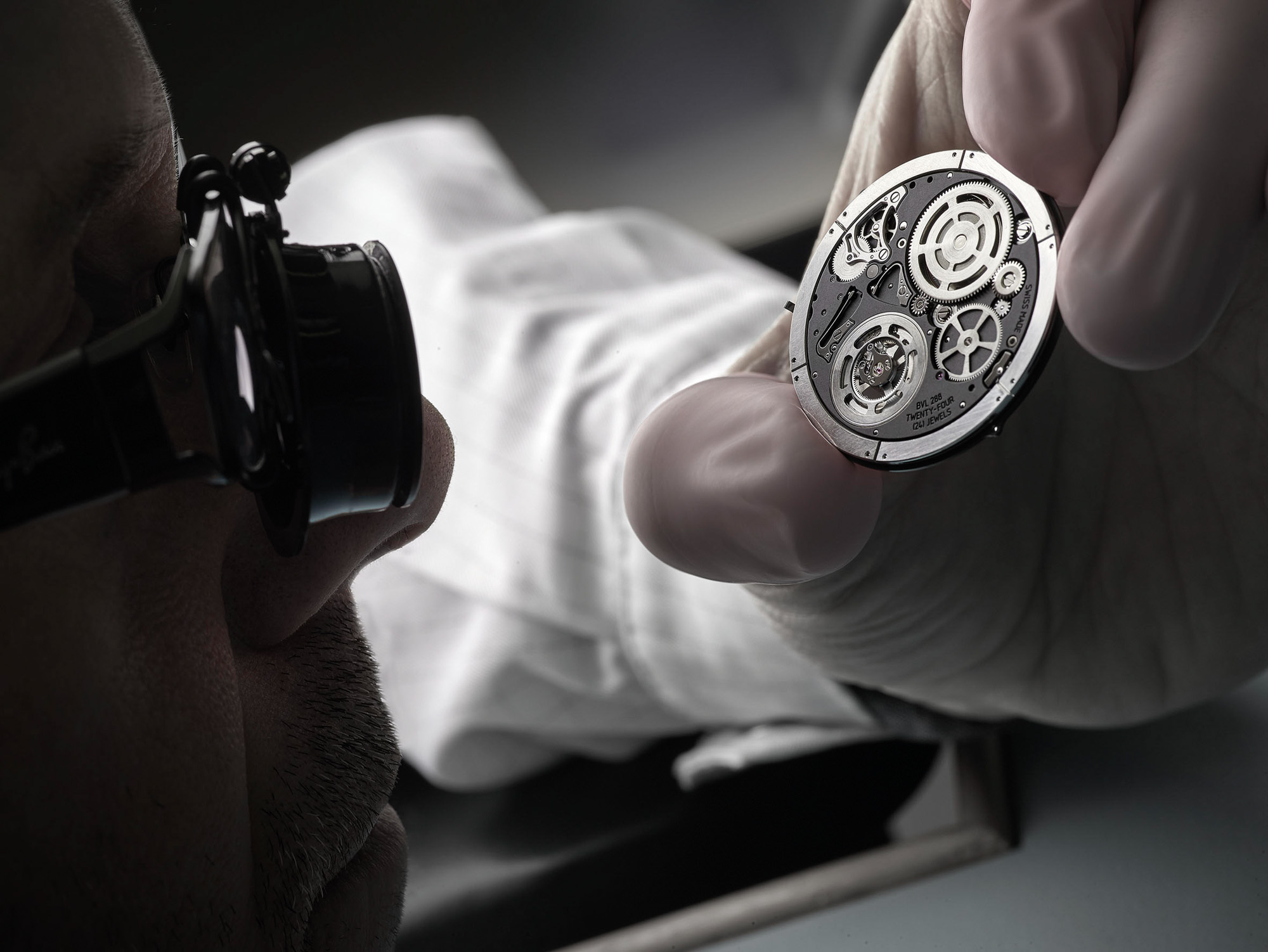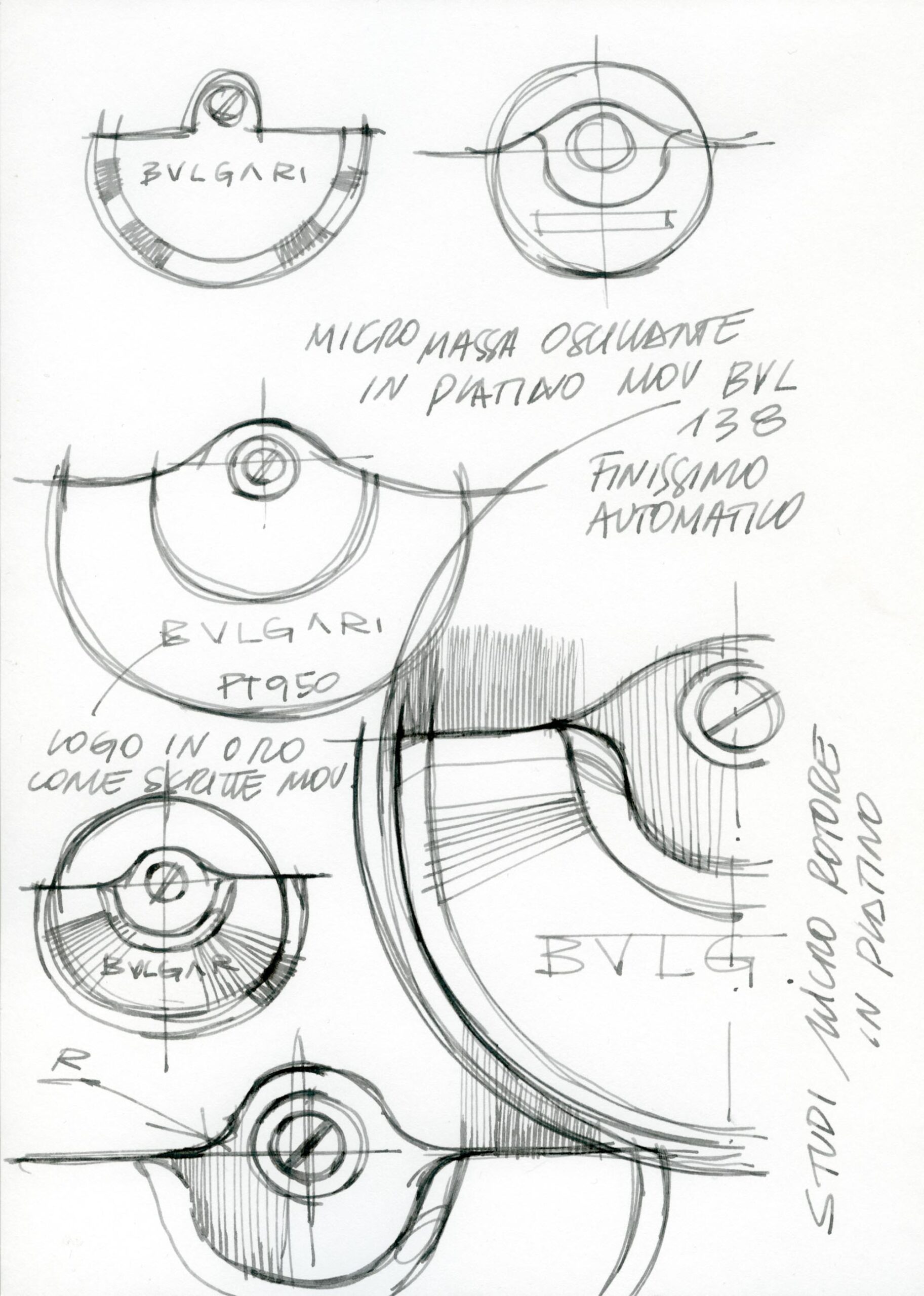 Sponsored post presented on aBlogtoWatch for advertiser
Sponsored post presented on aBlogtoWatch for advertiser
In just 10 years, Bulgari has claimed eight world records in ultra-thin watchmaking, attained through bold, completely new horological creations, as well as historically popular complications engineered into hitherto impossibly thin new forms. This unique recipe for success was developed through careful planning, the savoir faire of Bulgari’s fully integrated Swiss manufactures, which you can learn about in full detail here, and the deep-rooted tradition of an artistic approach that dictates every move made at Bulgari’s headquarters in Rome, Italy. Today, we look at the art of miniaturization — how Bulgari mastered ultra-thin and ultra-small watch movements.

Fabrizio Buonamassa, Design Director of Bulgari watches, joined the company some 20 years ago, and aBlogtoWatch met with him in person in Italy to discuss the process that led Bulgari on its way. We also talked about its proudly Italian approach to art that shaped ultra-thin Bulgari watches over time. Buonamassa explains: “Early on every year, we used to change our mind and debut a new case or a bold new design, leading watch lovers to have the impression we were too fashion focused…”
…At a certain moment we decided that we, Bulgari, have to find our path. We don’t want to follow trends or other brands anymore; we will, instead, concentrate on finding a different way to wear a grand complication watch.”
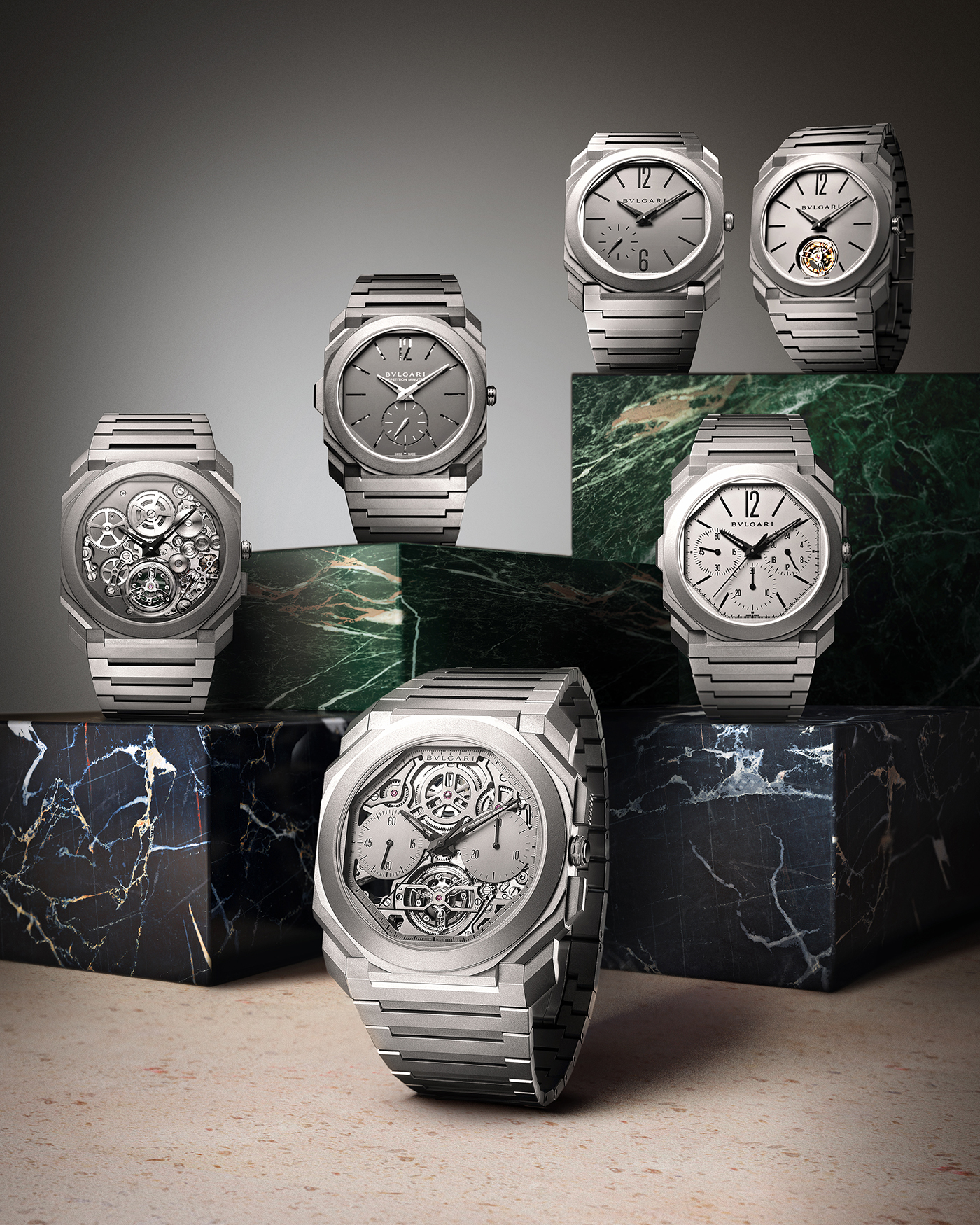
“That was the beginning of the Octo Finissimo. We launched with the tourbillon, followed by the minute repeater,” both incredible technical exercises, each limited to 50 and 30 pieces, respectively. “The biggest milestone in terms of aesthetics,” Buonamassa explains, “was the minute repeater, while in terms of reaching new potentials in the precision of the Finissimo, the self-winding three-hander that came after it meant the next giant leap forward.” It had the same aesthetic as the minute repeater, fully rendered in titanium, but it had to perform accurately and reliably on a comparably much greater scale. It even introduced the ultra-thin titanium bracelet to the Finissimo collection that you see fitted and retro-fitted to every Octo Finissimo piece in the image below.

Buonamassa continues: “The idea was to completely change the way an ultra-thin watch can be worn and appreciated. Before the Octo, extra-thin watches were tuxedo watches reserved for special events and outfits: They were round watches with very thin bezels, a white or black dial made with enamel or lacquer, an alligator strap with black stitching and a polished finish.” While highly elegant and technically refined, they lacked the panache, the complexity, and the durability that could render them suitable for more frequent wear, let alone daily wear.
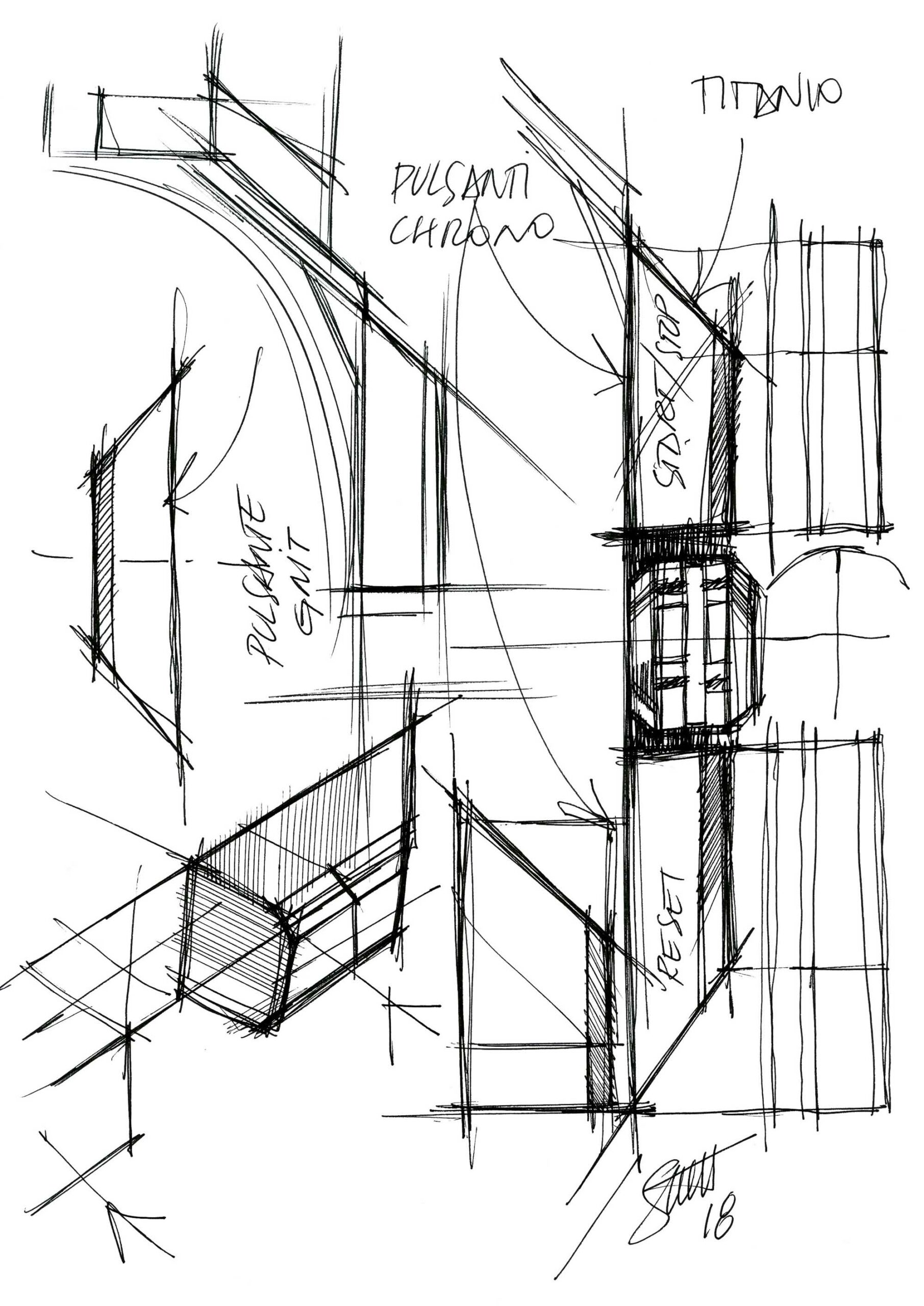
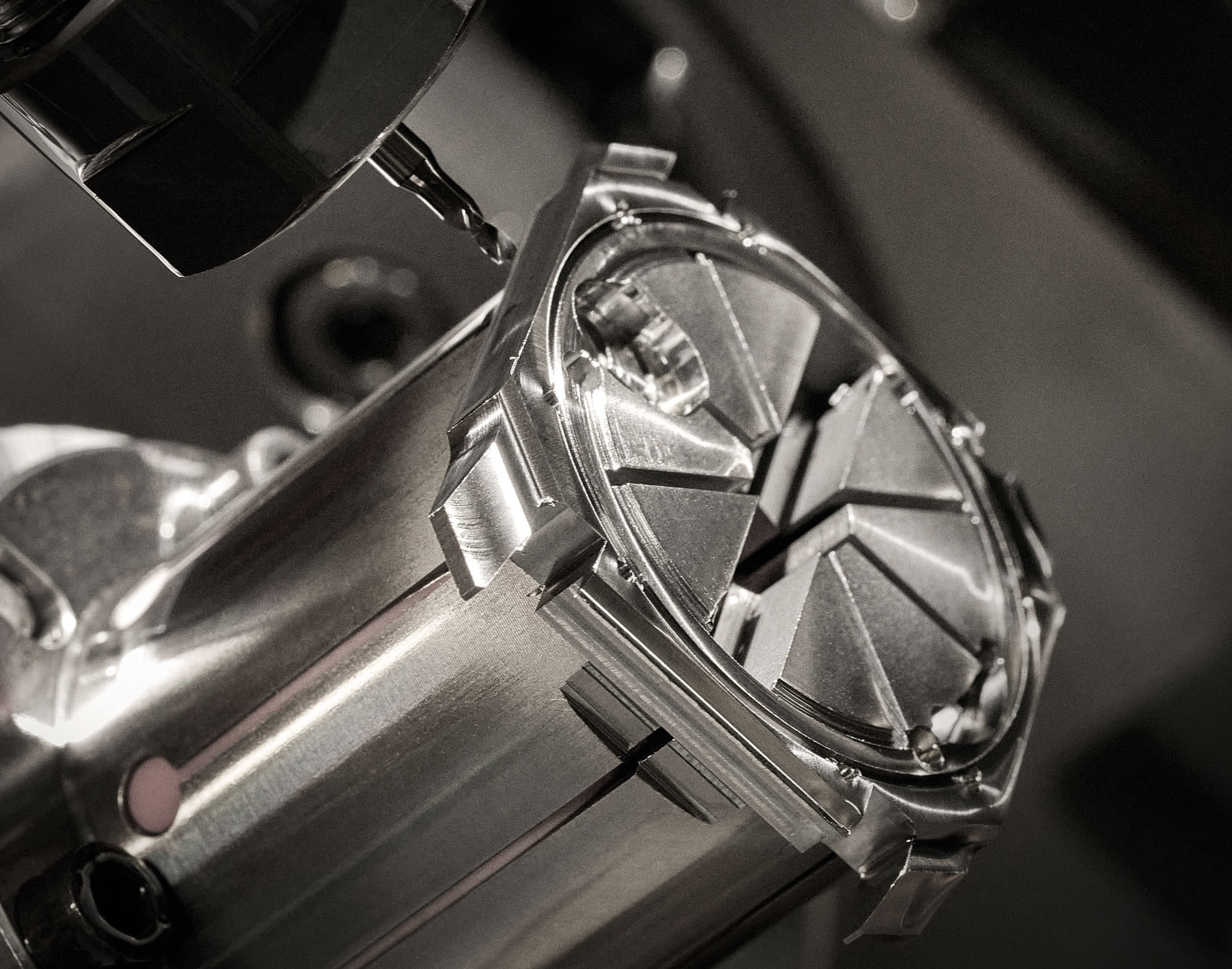
“And that is why, when we were developing the hours-minutes-seconds Octo Finissimo, the third introduction to the collection and by far the most affordable, we decided that it had to have a bracelet,” says Buonamassa. In this segment, watch lovers expect to be able to wear their watches around the day and in fact around the calendar: A lightweight, flexible, and beautifully made bracelet, including its ultra-thin clasp, all in comfortable titanium, was to be created from scratch.
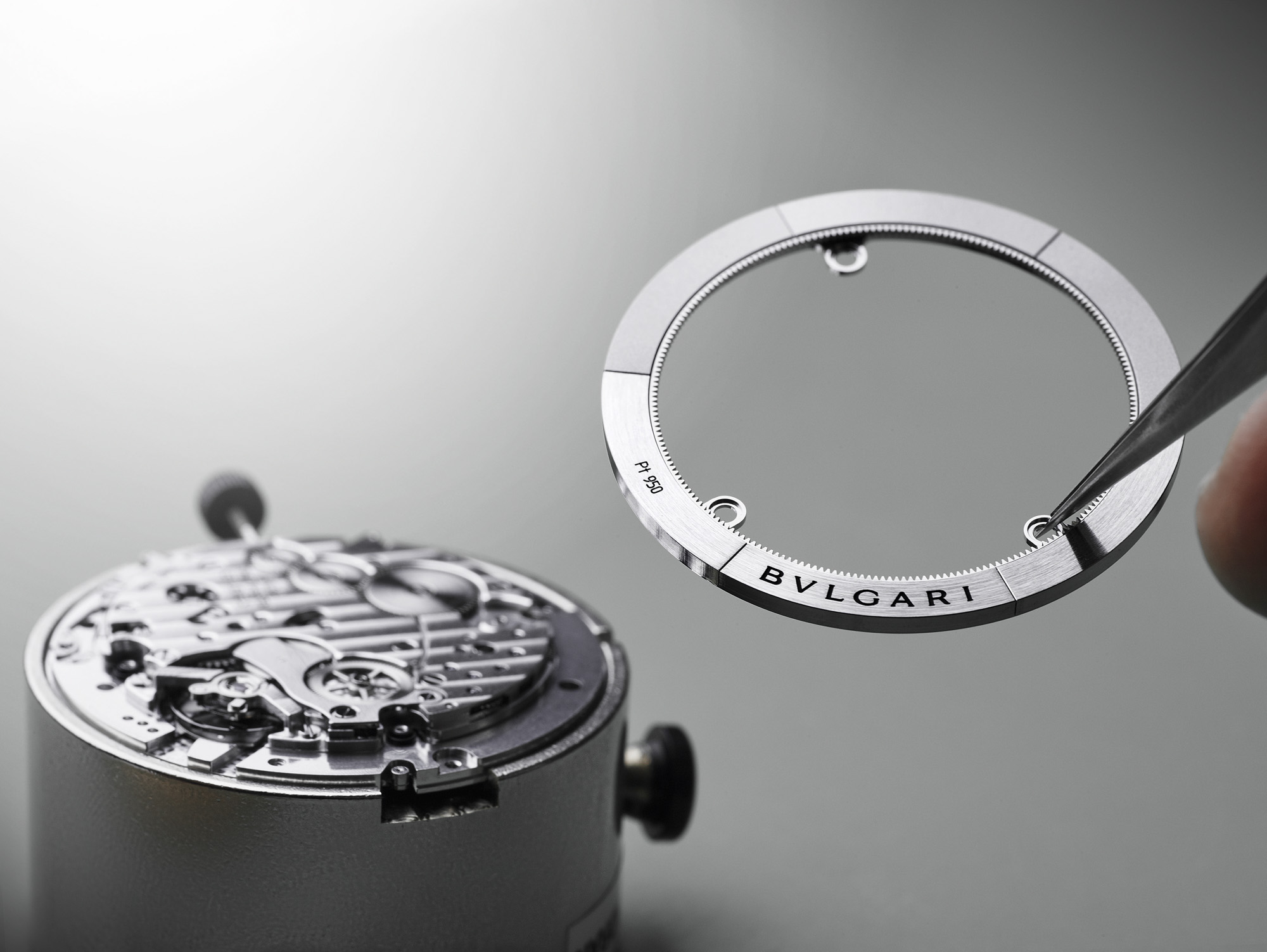
The platinum peripheral rotor of the Bulgari Octo Finissimo Chrono GMT, the brand’s 5th record-thin piece.
The art of miniaturization was born through our manual winding tourbillon, the minute repeater, the self-winding three-hander, the chronograph, the chronograph tourbillon, skeletonized tourbillon, and brought to an all-new level now by the Ultra. Buonamassa says, “This is an evolution that we tried to manage in a very precise way and with a very tight schedule on our manufacturing side, developing various technologies and implementing them in various Octo Finissimo models that were to come. These include the ultra-thin tourbillon and chronograph complications and the peripheral self-winding rotor layout and assembly. A long-long journey.”
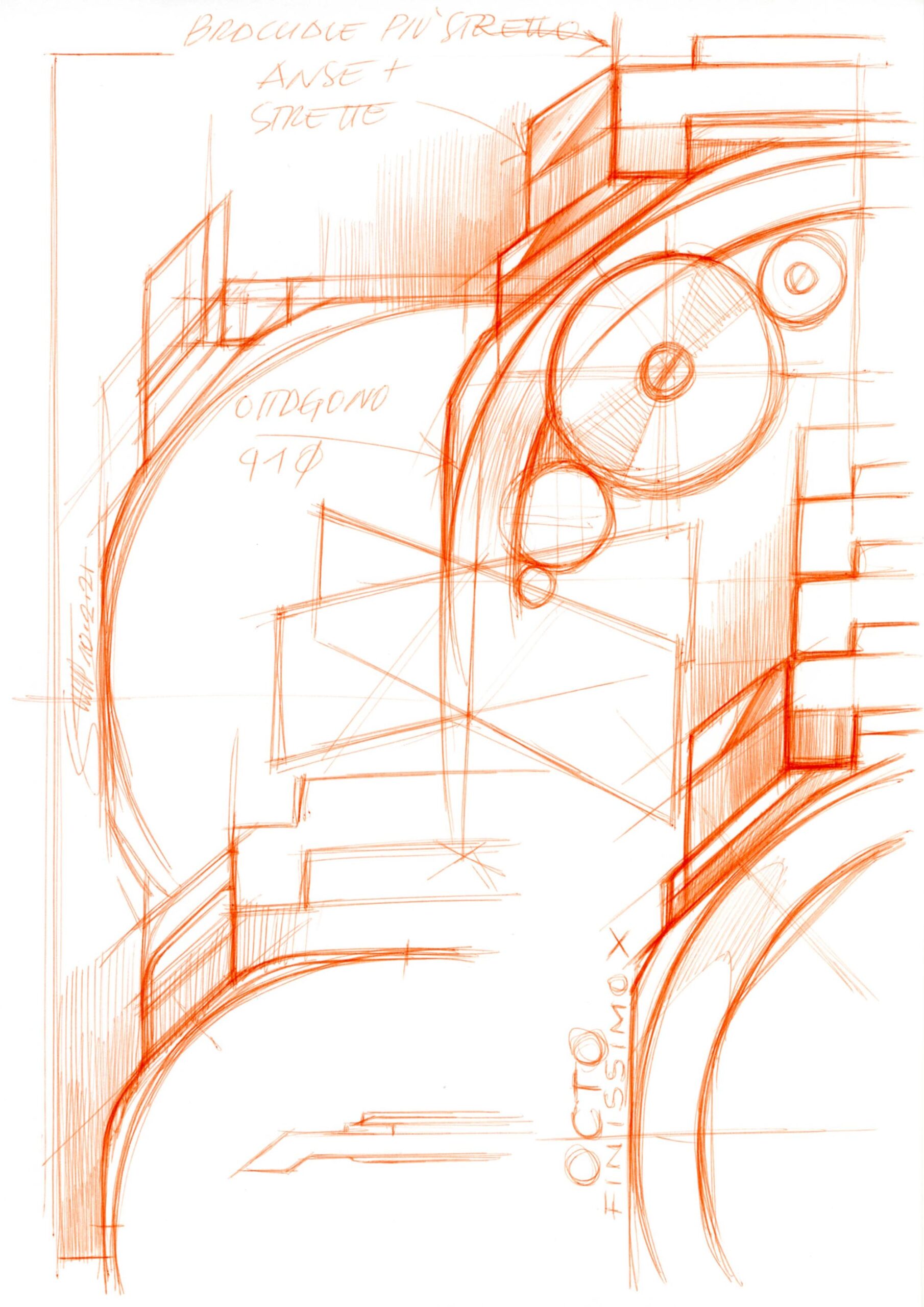
From a design and artistic viewpoint, the incredibly low volume of the Octo Finissimo pieces has introduced opportunities and challenges alike for Buonamassa and his team. Wristwatches, especially those trending in luxury watchmaking’s 30-year modern renaissance, tend to have cases at least 8-10mm-thick, generally sporting even greater dimensions with 14-16mm-thick exteriors. This provides designers with relatively large surfaces that can take on complex, sculpted shapes: beveled edges running along case profiles and lugs, vertical case sides, and gently curved lugs sporting brushed and polished surfaces. None of these are much of an option with the desired ultra-thin dimensions of the Octo Finissimo collection whose cases range between 1.80mm-thick for the Octo Finissimo Ultra and 6.90mm-thick for the feature-heavy Octo Finissimo Chrono GMT which, as its name implies, combines a column-wheel operated chronograph, a GMT indication, and a self-winding system with a 4Hz operating frequency and an extended 55-hour power reserve.
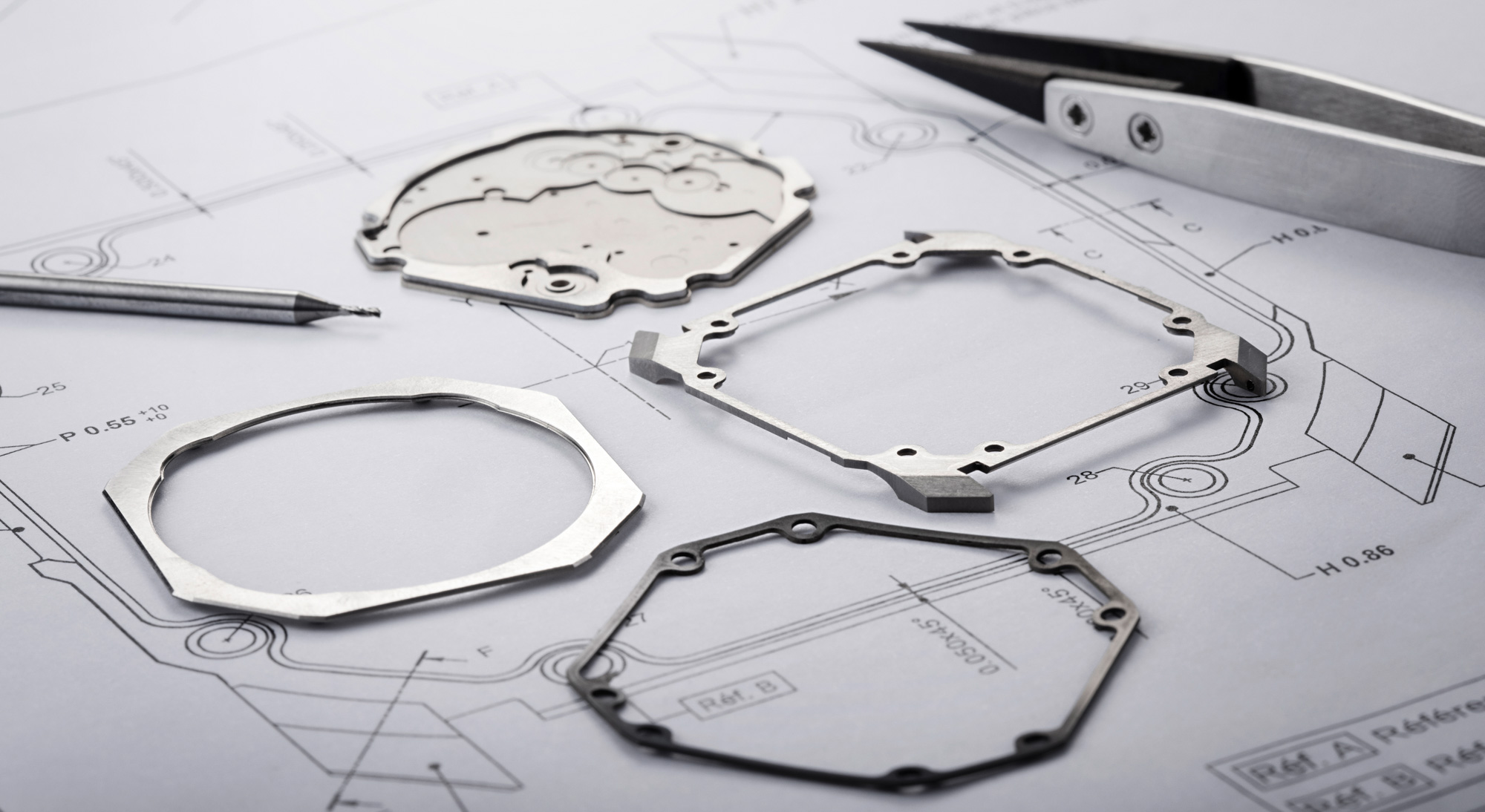
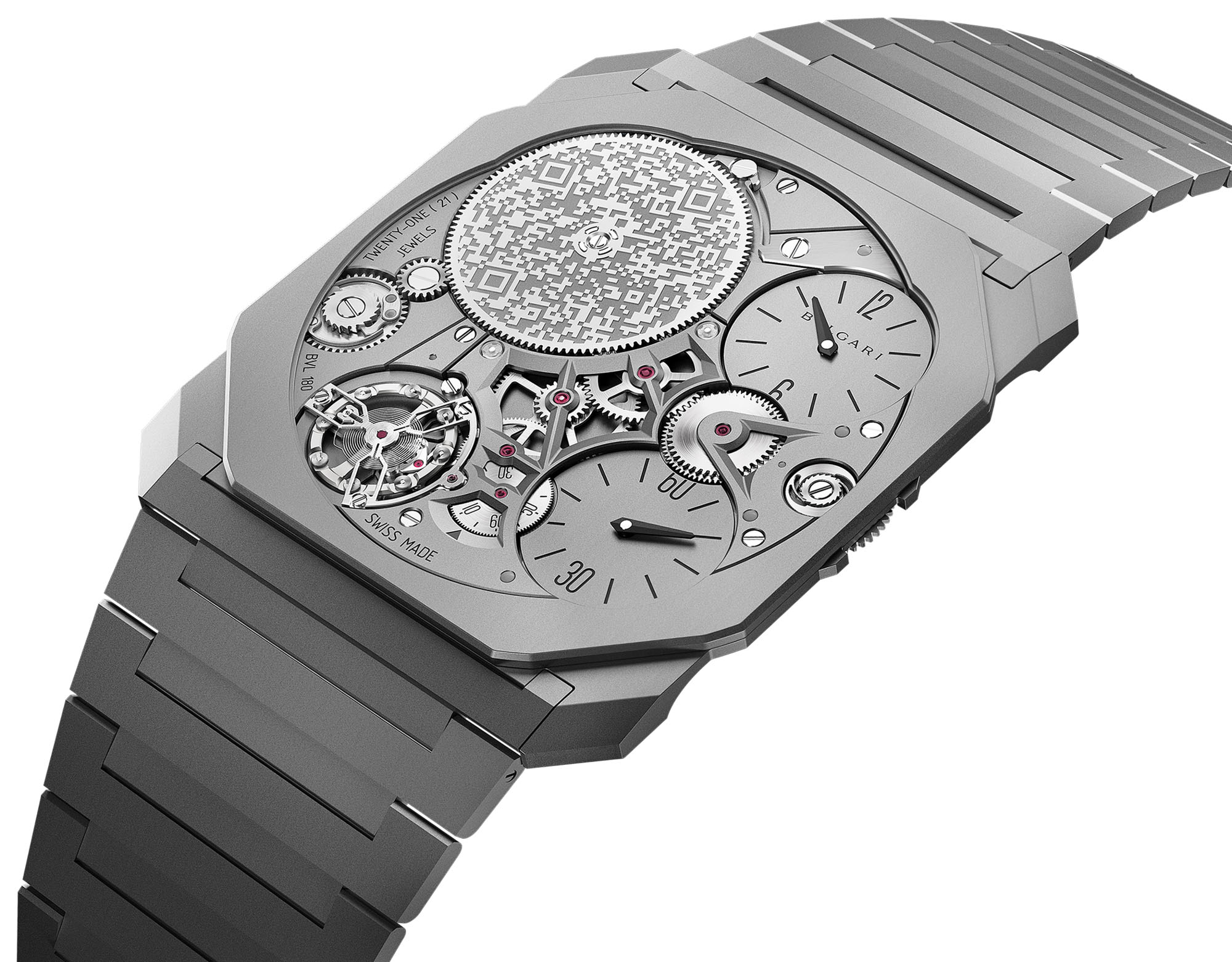
It goes without saying that Bulgari had to take a completely novel approach to both design and engineering in order to attain its goal of a diverse and established collection of ultra-thin watches. For some models, Bulgari had to remove the caseback as its traditionally used and utilize it as an integral part of the movement, and for others, it had to completely remove the dial and integrate indications into the plane of the movement, surrounding time displays with wheels and plates of the watch’s ultra-thin caliber. For the Ultra, tungsten carbide (an incredibly strong material), had to be used for the caseback to support the structural integrity of this sub-2mm watch case and the record-thin movement inside. “Each time you face a new challenge as big and complicated as this, you have to change your point of view. At the beginning, the Octo Finissimo was a completely different watch from the one we ended up feeling happy about and bringing into production,” says Buonamassa.
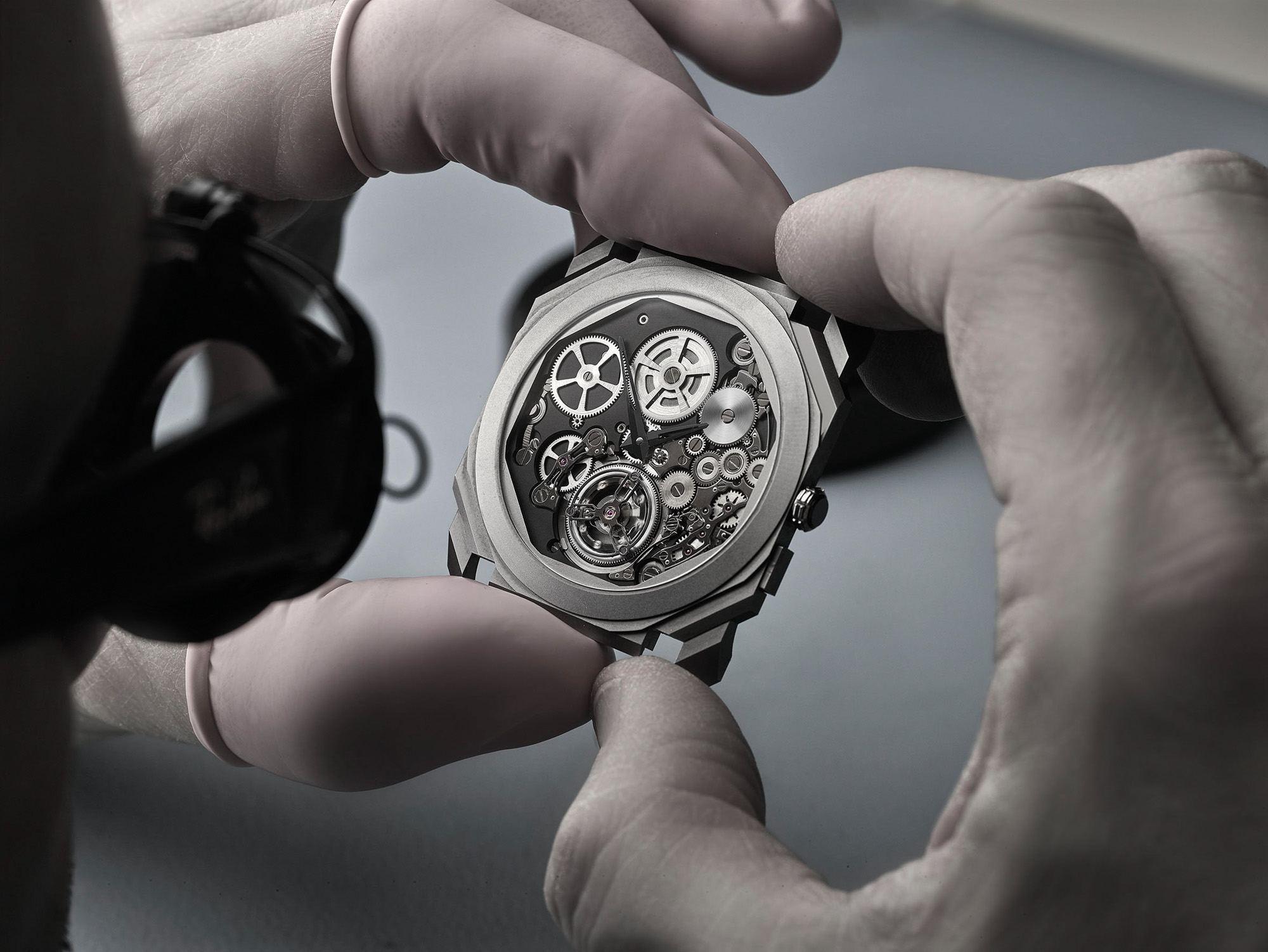
This journey has taught Bulgari how to develop new watches in a way that is largely unprecedented even in modern watchmaking. Whereas the absolute majority of today’s luxury watches are designed around an existing movement and feature set, which largely define case size, proportion, and dial layout, Bulgari’s savoir-faire allows it to go from an inspired design and construct a movement around its visual concept. This has, as the Octo Finissimo collection exemplifies, allowed for a remarkable variety in dial layouts, indications, and styles that range from highly minimalistic to immensely intricate.
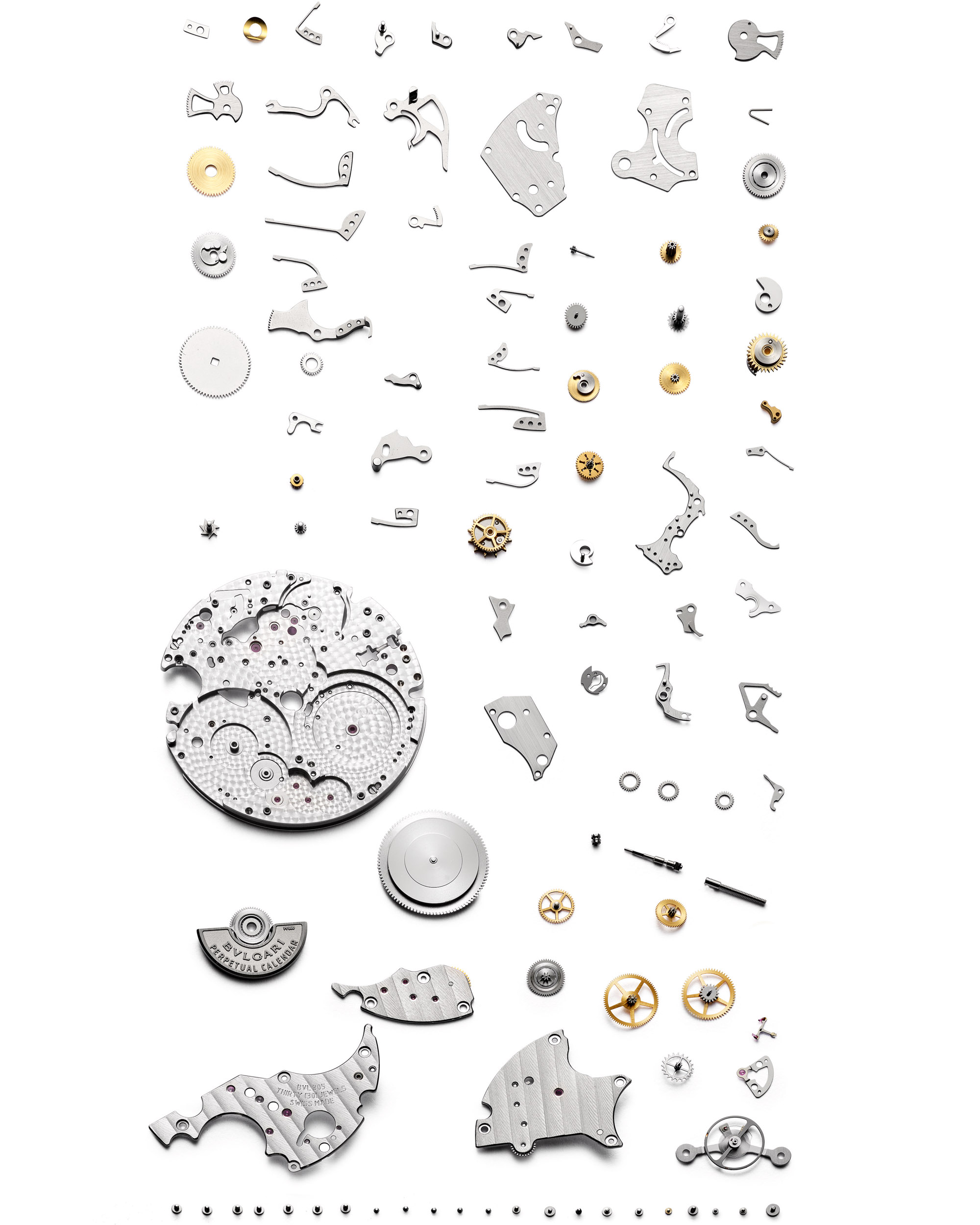
The “exploded view” of the Bulgari Octo Finissimo Perpetual Calendar’s 2.75mm-thick BVL 305 movement.
It is a rare privilege for a watchmaker to start from a free sketch and go through the complicated technical processes of movement development after that. Buonamassa cites the Octo Finissimo Perpetual Calendar as a fitting example: “I drew up a perpetual calendar and showed it to Bulgari’s watch masters, saying, “I would love to have this kind of a perpetual calendar. I don’t care about the moon; I don’t want to have four counters because they are too small — I would love to have two counters with the day and the month so they are big enough, and a retrograde display for the 31 days to mark the defining feature of the piece.” This kind of play is what has changed the face of the watch completely because it came from a desire for a particular layout Buonamassa and Bulgari considered more legible and aesthetically pleasing, and not from a need to dress up an existing movement in a mildly new way.
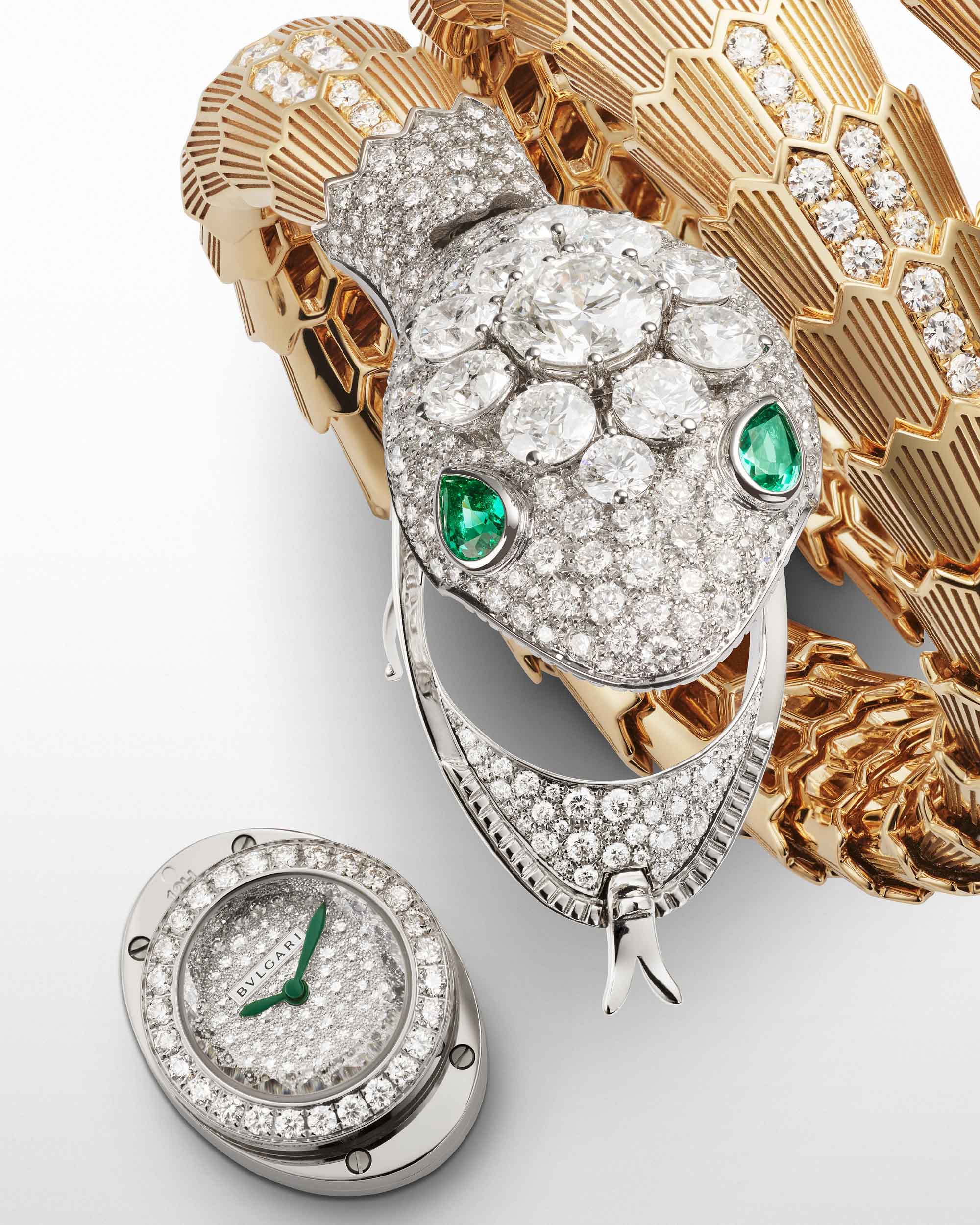
Miniaturization at Bulgari has taken shape not just in the thinness of its Octo Finissimo watches, but also in the smallest round mechanical movement in production today: the Bulgari Piccolissimo. Just like the Octo Finissimo, the Piccolissimo has also been conceived for real-world use. Unlike conceptual ultra-thin and ultra-small movements that appear from time to time, these are expected to serve as the backbone of highly important Bulgari timepieces that may, of course, also include highly exclusive and incredibly intricate pieces.
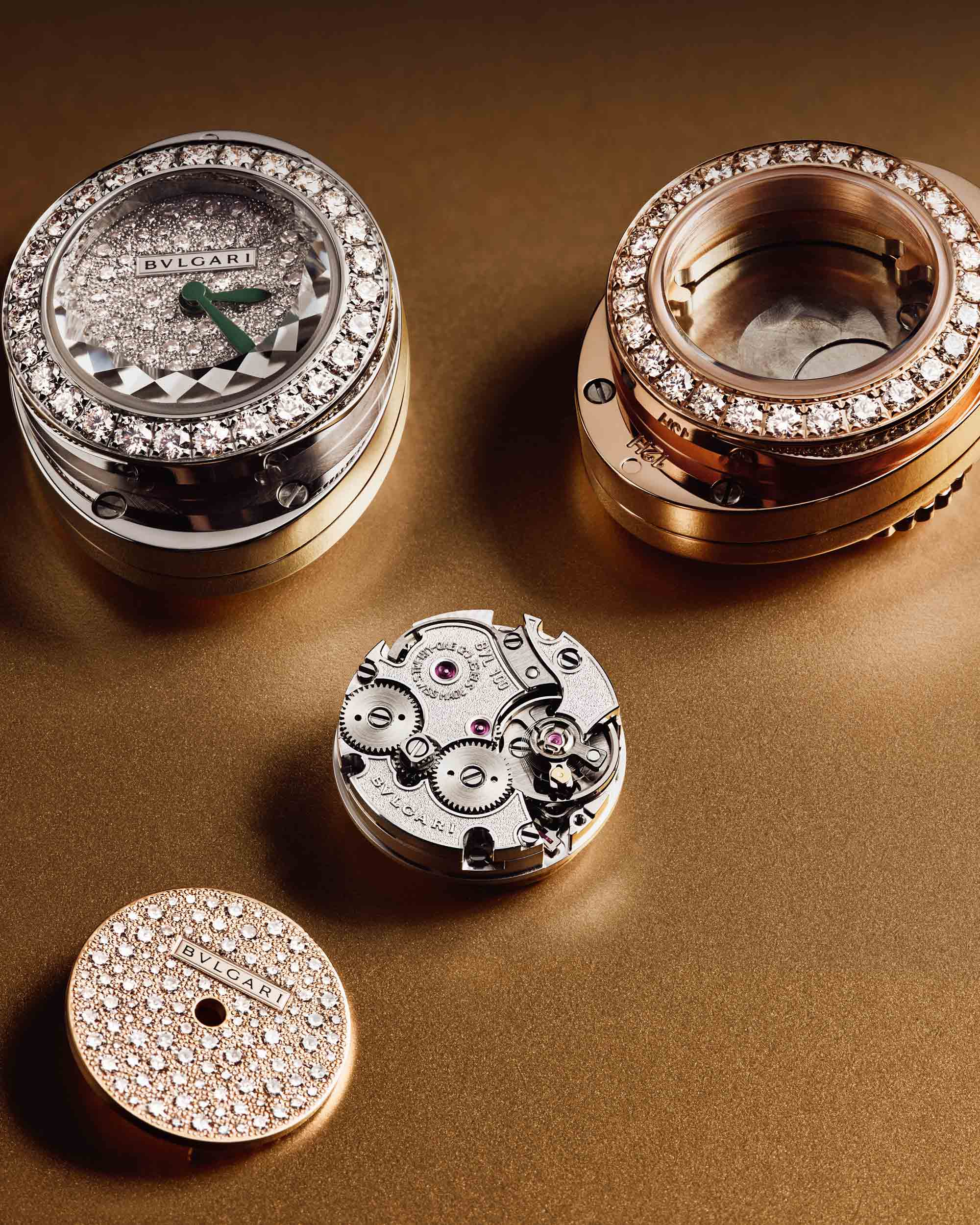
Speaking of which, Bulgari actually started with watches over 100 years ago with a high-jewelry watch that was fitted with a mechanical movement. Then, in the late ’30s and early ’40s, it started producing the Serpenti, the brand’s iconic secret watch – learn more about its lavish, star-studded history here. At that time, Bulgari produced the jewelry part, and watchmakers like Jaeger-LeCoultre and Vacheron Constantin supplied their movements. At a certain movement, with the quartz wave, nobody wanted to invest in such a small mechanical movement anymore for two reasons: First, quartz alternatives cost a fraction and performed better than the 10 or so hours-long power reserve calibers on offer at that time, which had a tendency to gain five and lose up to 30 minutes in a day. Second, nobody had an important asset like Bulgari has with its established and tirelessly renewed selection haute joaillerie watches.
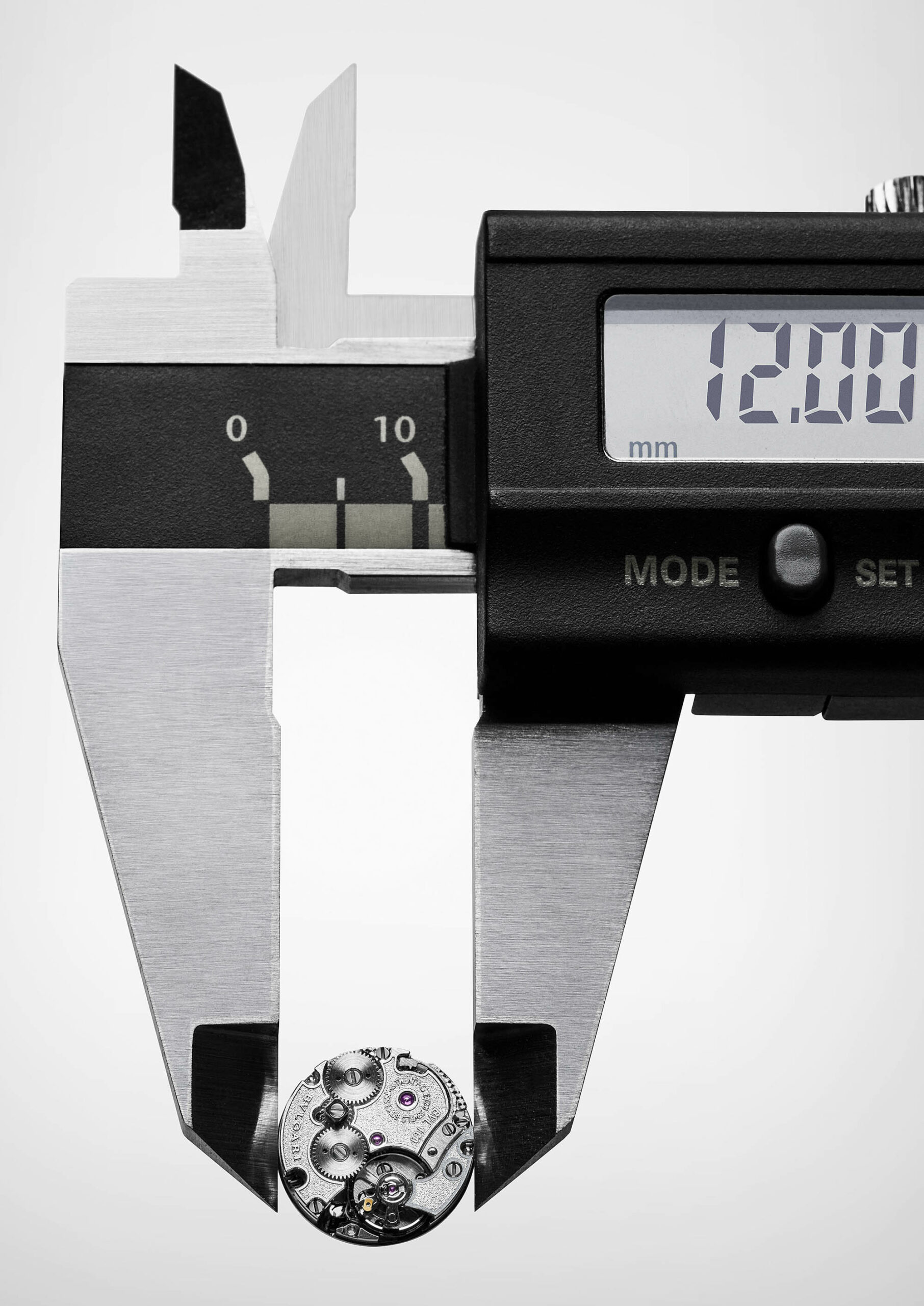
Buonamassa shares the history of the Piccolissimo: “We are in an extremely small and exclusive club when it comes to the assortment of high-jewelry pieces, and so, at a certain moment, after years of experience with the Finissimo, we began to discuss dedicating our attention to a movement that would power ladies’ watches. If you are a well-known watchmaker, you have to have a balance between men’s and ladies’ watches, and that has led us to develop the Piccolissimo, which wasn’t easy at all and which, again, explains why nobody offers a mechanical movement like this today.”
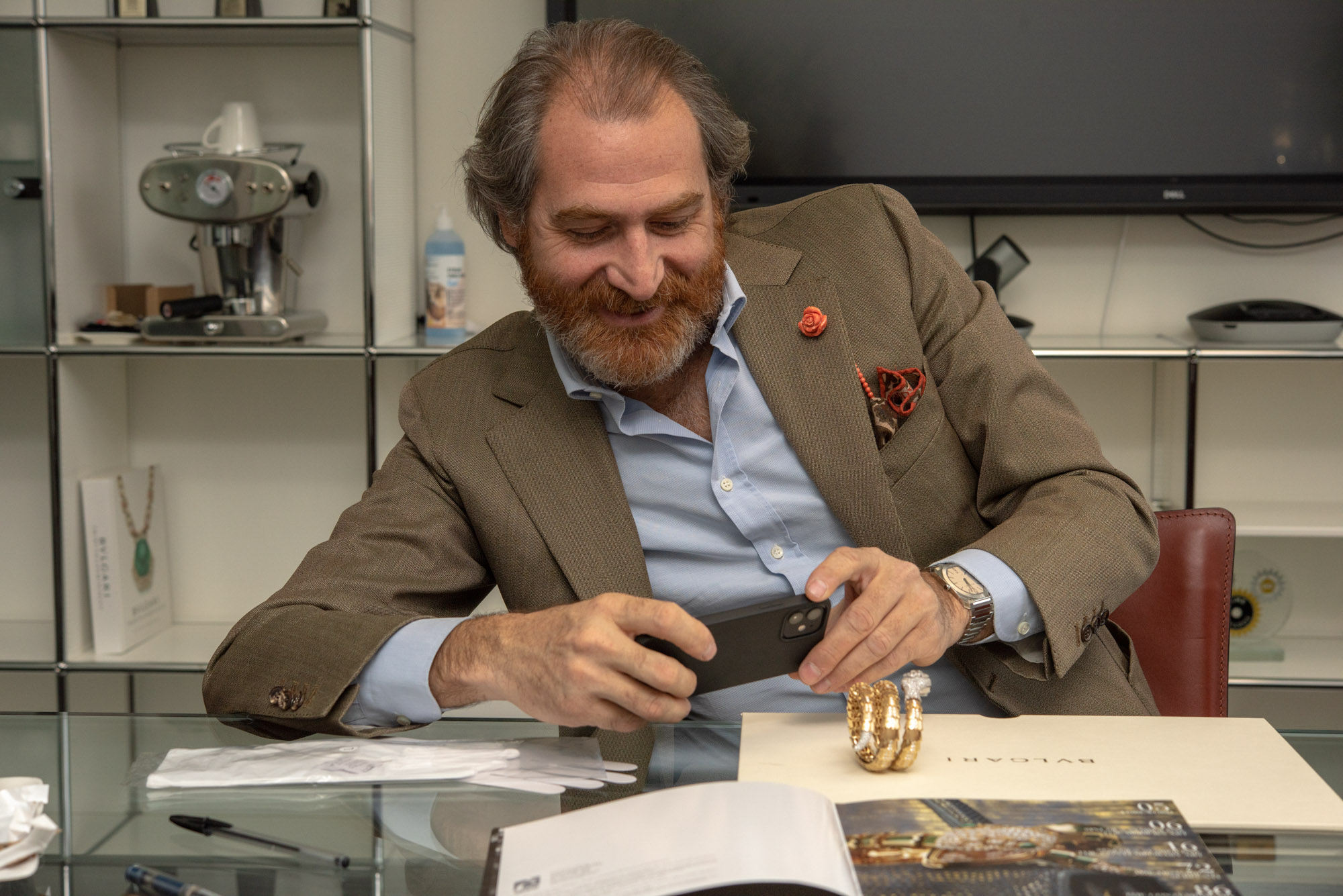
“The Piccolissimo has a 6mm large barrel that covers half of the 12mm-wide movement and offers a 30-hour power reserve. It is a modern mechanical movement that isn’t the smallest because the JLC 101 is the smaller — but the construction is totally different. We decided to have a round-shaped caliber simply because it is more versatile for us and our needs.” Bulgari has a vast variety of case shapes for its ladies’ watches: The seductive Serpenti, round and drop-shaped watch heads, as well as past and future bespoke designs all had to be taken into consideration when deciding on the shape of the Piccolissimo at the earliest stages of its development.
Measuring just 12mm-wide and 2.5mm-thick, the Piccolissimo weighs just 1.30 grams, making it today’s smallest round mechanical caliber. What sets it apart from watchmaking history’s yet smaller mechanical movements developed for ladies’ watches is its performance. In terms of accuracy and durability, it outperforms movements of old which might have been fractionally smaller, still, but often offered very poor timekeeping accuracy.
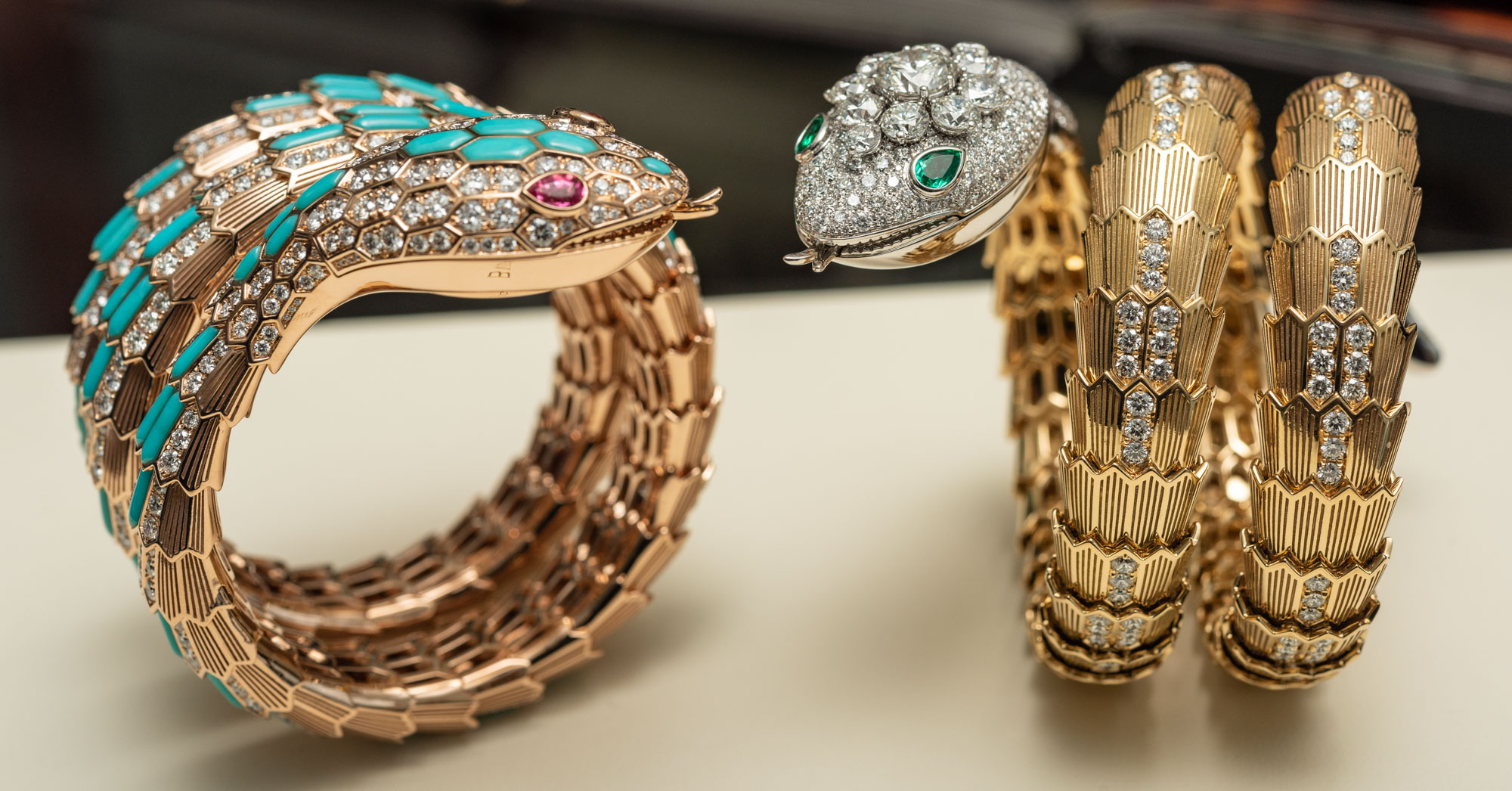

Since then, the Piccolissimo has allowed Bulgari to further develop what is arguably its most iconic piece: “We completely redesigned the head of the Serpenti secret watch thanks to the Piccolissimo. The head is smaller and thinner, the body is thinner [than modern Serpenti pieces of late], and so the watch now is lighter and easier to wear, with completely new proportions,” says Buonamassa. This, needless to say, would not have been possible without a new movement around which the narrower head could be shaped. Interestingly, this development also helped Bulgari to shape today’s Serpenti in a way that is truer to historic vintage pieces in the collection.
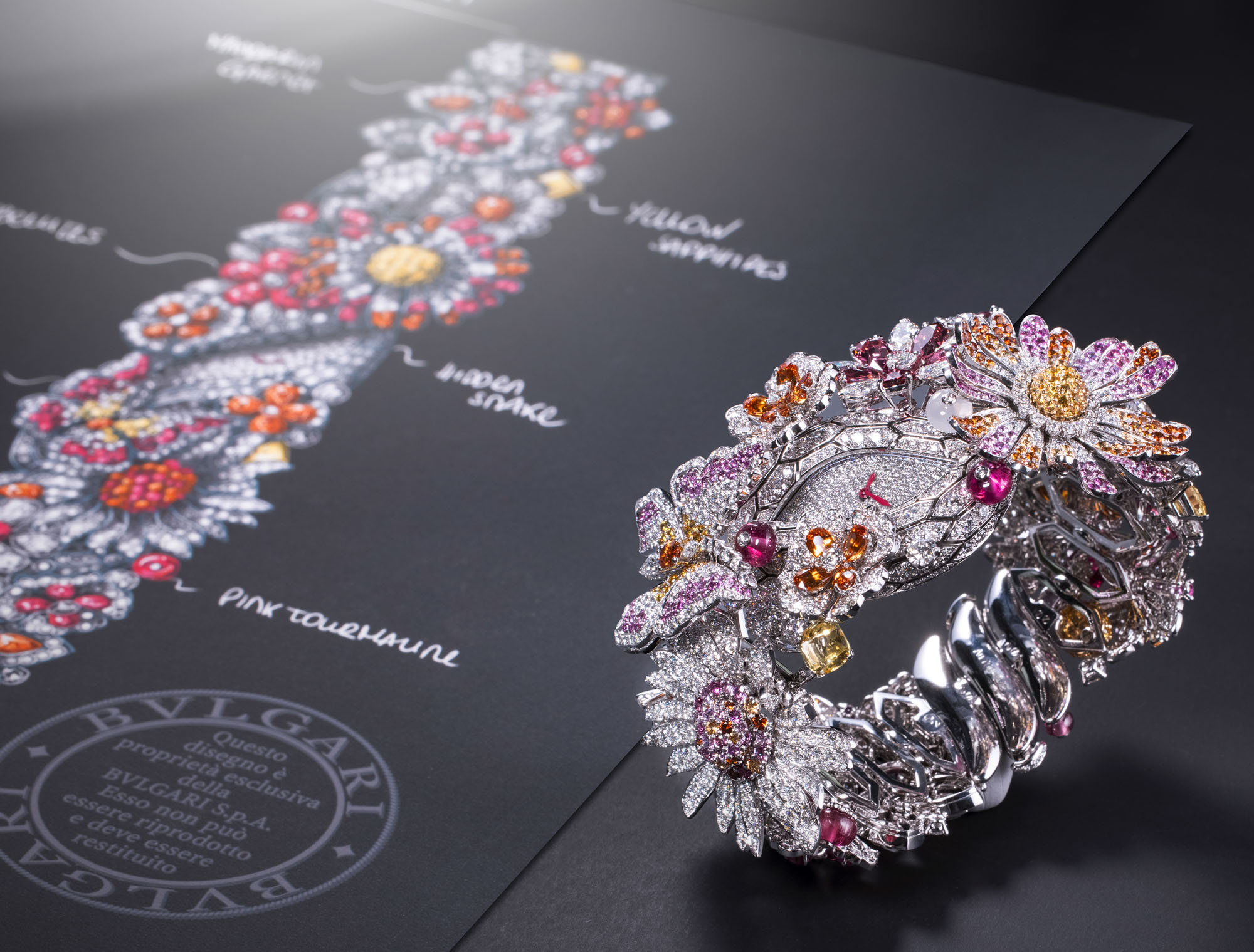
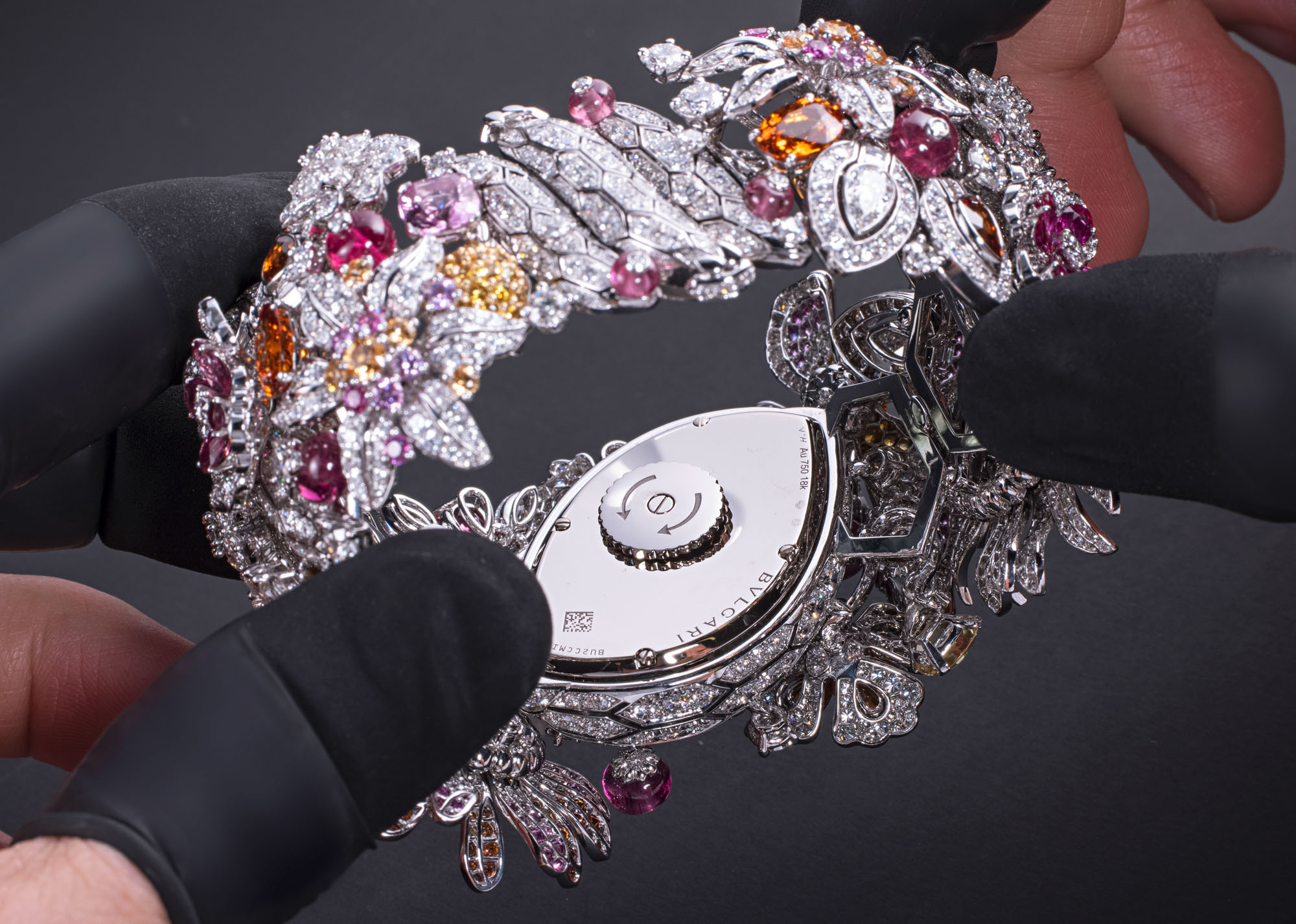
Since its recent debut, the Piccolissimo has appeared in some of the brand’s most special pièce uniques: by powering a selection of ultra-high-end jewelry pieces, including the Bulgari Serpenti Giardino dell’Eden Piccolissimo. Over 1,500 stones are used to recreate the image of a lush garden – hence the name, the Garden of Eden – where a butterfly is ready to spread its delicate wings while a mysterious snake sinuously moves across the flowered garden. Sparkling diamonds are matched with a ruby, pink tourmalines, mandarin garnet, pink and yellow sapphires, and rock crystal. Some 2,000 hours went into the completion of the Giardino dell’Eden, and at its heart lives the Piccolissimo, Bulgari’s new micro-movement.
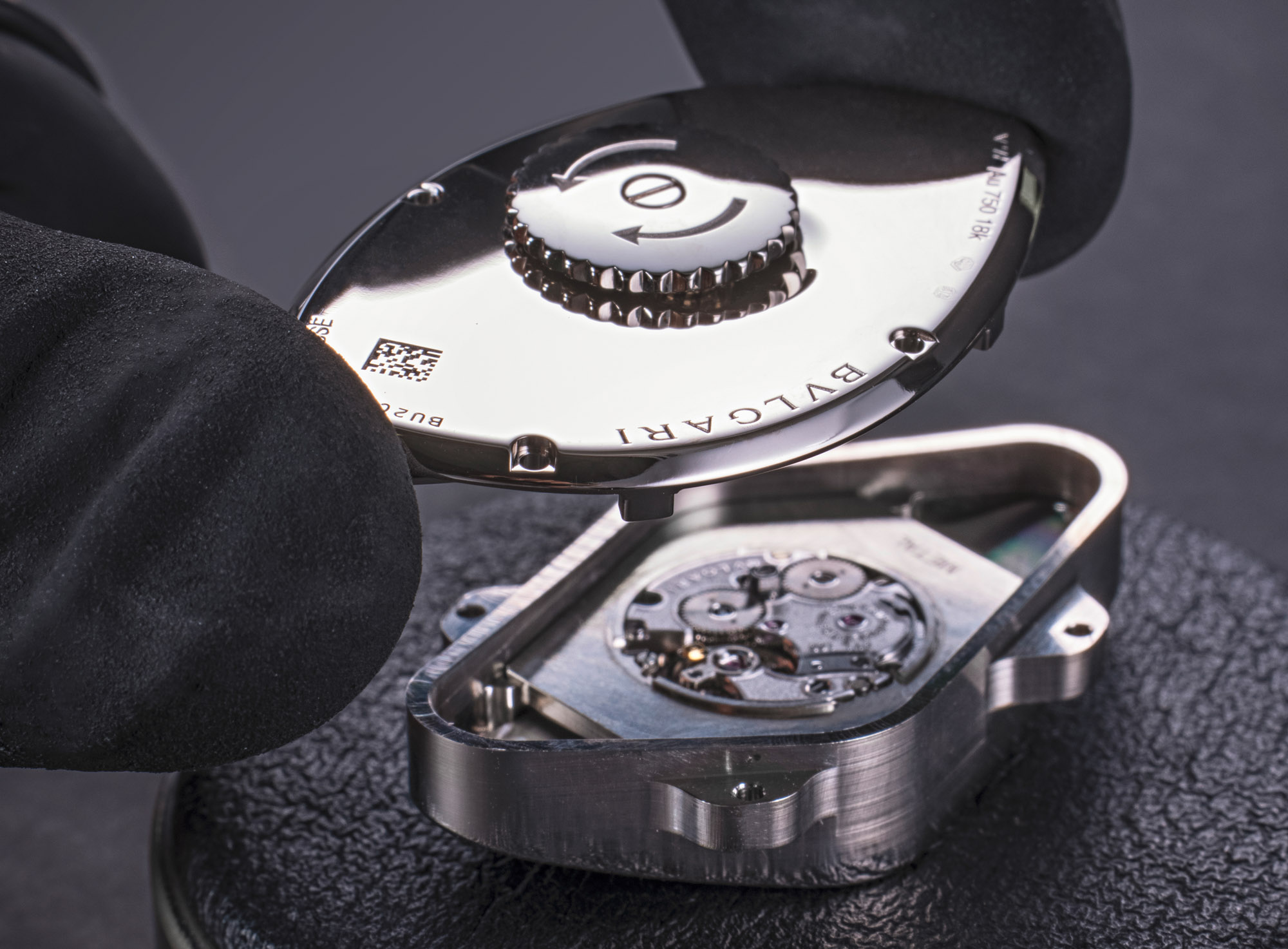
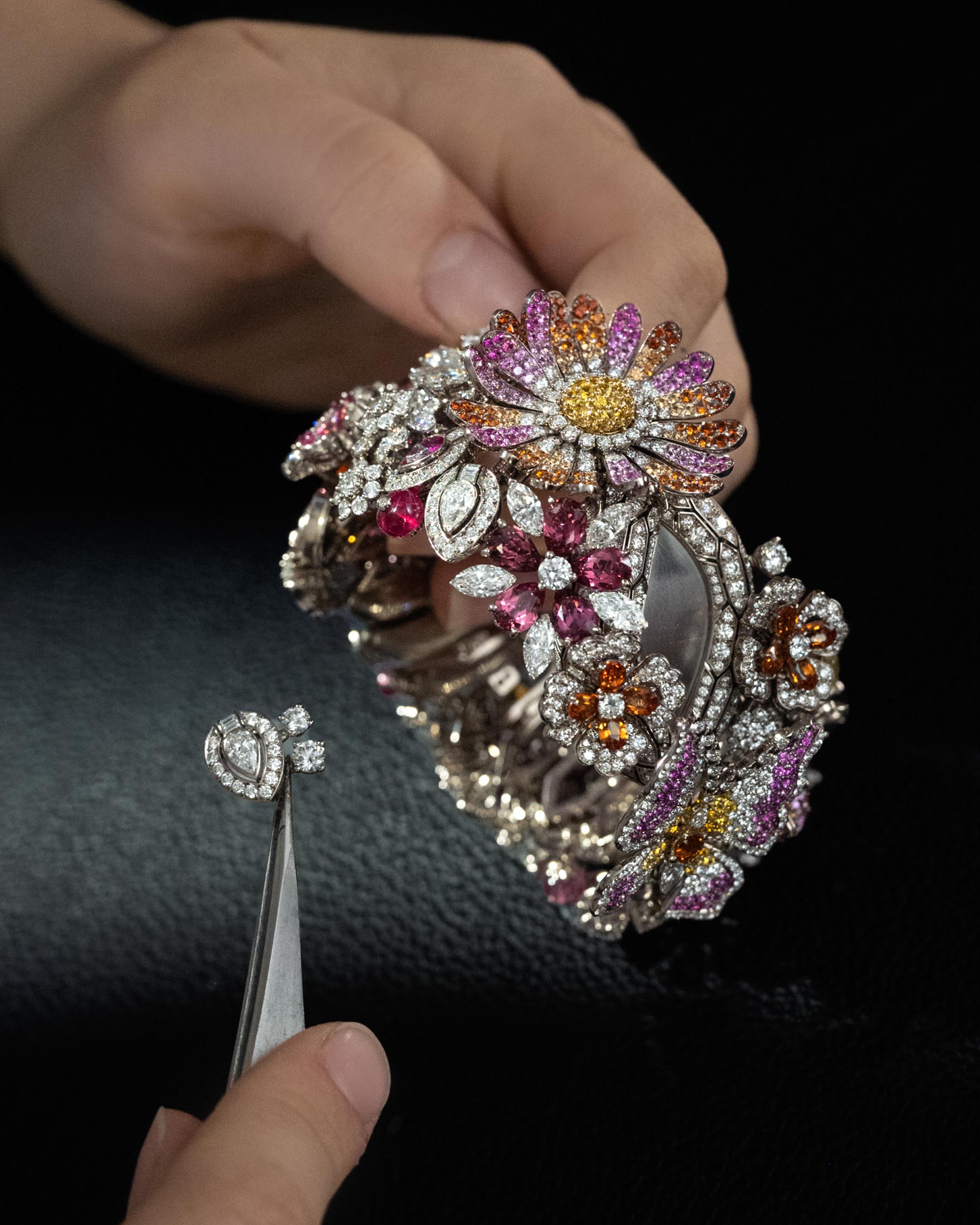 It was only right that such an incredibly lavish piece received the brand’s latest mechanical creation: A watch head in 18k white gold encapsulates the Piccolissimo, and it is on the caseback that one will find the crown used for winding and setting it. The Piccolissimo was specifically designed in a way to have its crown on the back, allowing Buonamassa and Bulgari to design beautiful cases free from the unsightly interruption of a crown. Furthermore, as is exemplified by the Serpenti Giardino dell’Eden Piccolissimo, sometimes there is no room at all to incorporate a crown on the side, as that space is dedicated to highly intricate artistic elements.
It was only right that such an incredibly lavish piece received the brand’s latest mechanical creation: A watch head in 18k white gold encapsulates the Piccolissimo, and it is on the caseback that one will find the crown used for winding and setting it. The Piccolissimo was specifically designed in a way to have its crown on the back, allowing Buonamassa and Bulgari to design beautiful cases free from the unsightly interruption of a crown. Furthermore, as is exemplified by the Serpenti Giardino dell’Eden Piccolissimo, sometimes there is no room at all to incorporate a crown on the side, as that space is dedicated to highly intricate artistic elements.
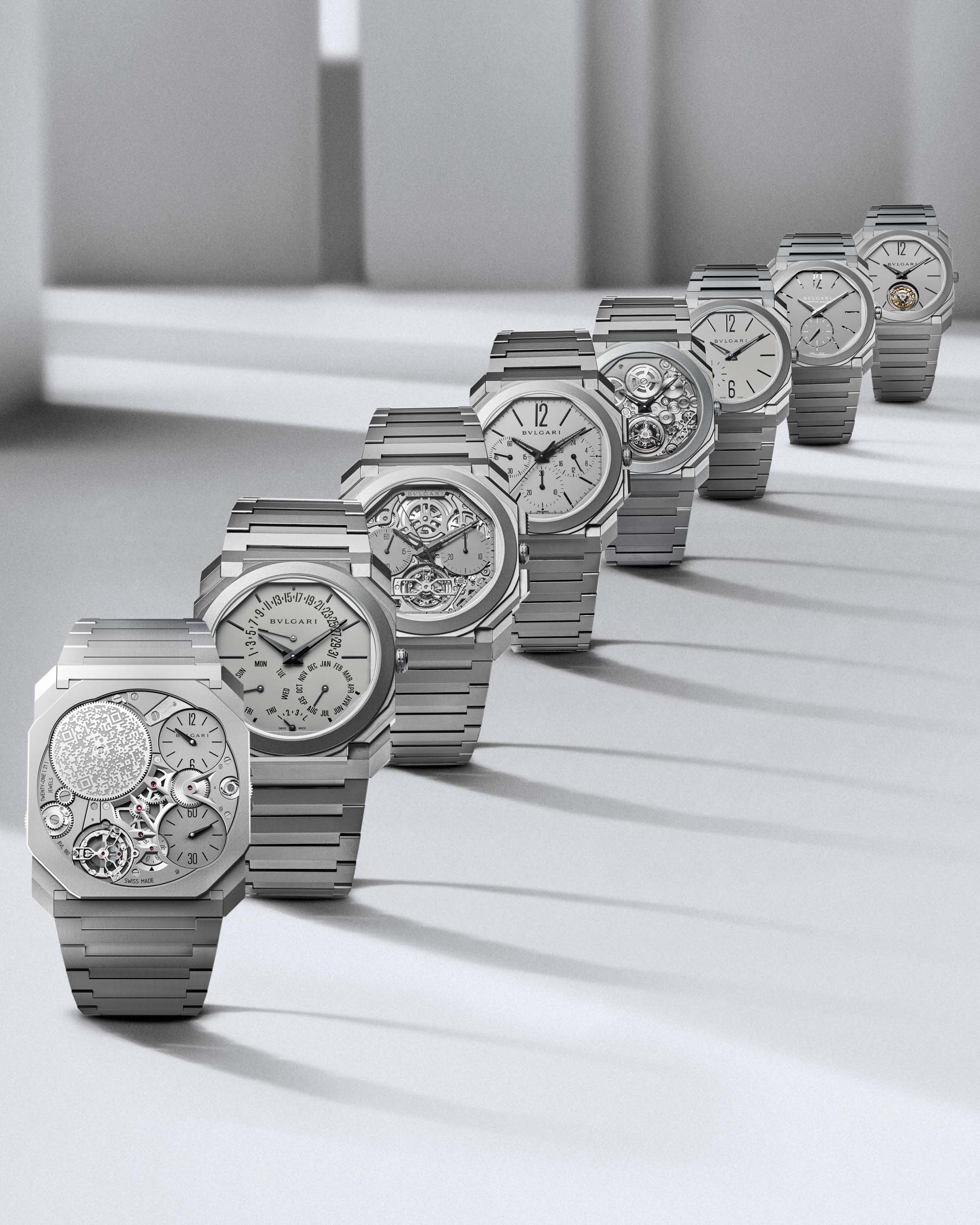
In summary, the art of miniaturization has not only allowed Bulgari to step up as the unrivaled champion of ultra-thin watchmaking, but also to master know-how that enables it to dedicate a seldom-seen priority to design and creativity, breaking the shackles of traditional watch development cycles where design has to follow established movement layouts. This freedom to create has resulted in the peerless Octo Finissimo collection that ranges from the inimitably stylish three-hand automatic to the $400,000 Ultra Finissimo and culminated in the know-how and desire that resulted in the Piccolissimo, a caliber specifically designed for ladies’ watches that stands unique in its day.
Over a decade of research, development, and investments has been combined with Bulgari’s dedication to its roots set firmly in Italian tradition and creativity to master the art of miniaturization, a unique accomplishment in modern watchmaking. To learn more, visit the brand’s website.
Sponsored Posts are a form of advertising that allows sponsors to share useful news, messages, and offers to aBlogtoWatch readers in a way traditional display advertising is often not best suited to. All Sponsored Posts are subject to editorial guidelines with the intent that they offer readers useful news, promotions, or stories. The viewpoints and opinions expressed in Sponsored Posts are those of the advertiser and not necessarily those of aBlogtoWatch or its writers.

